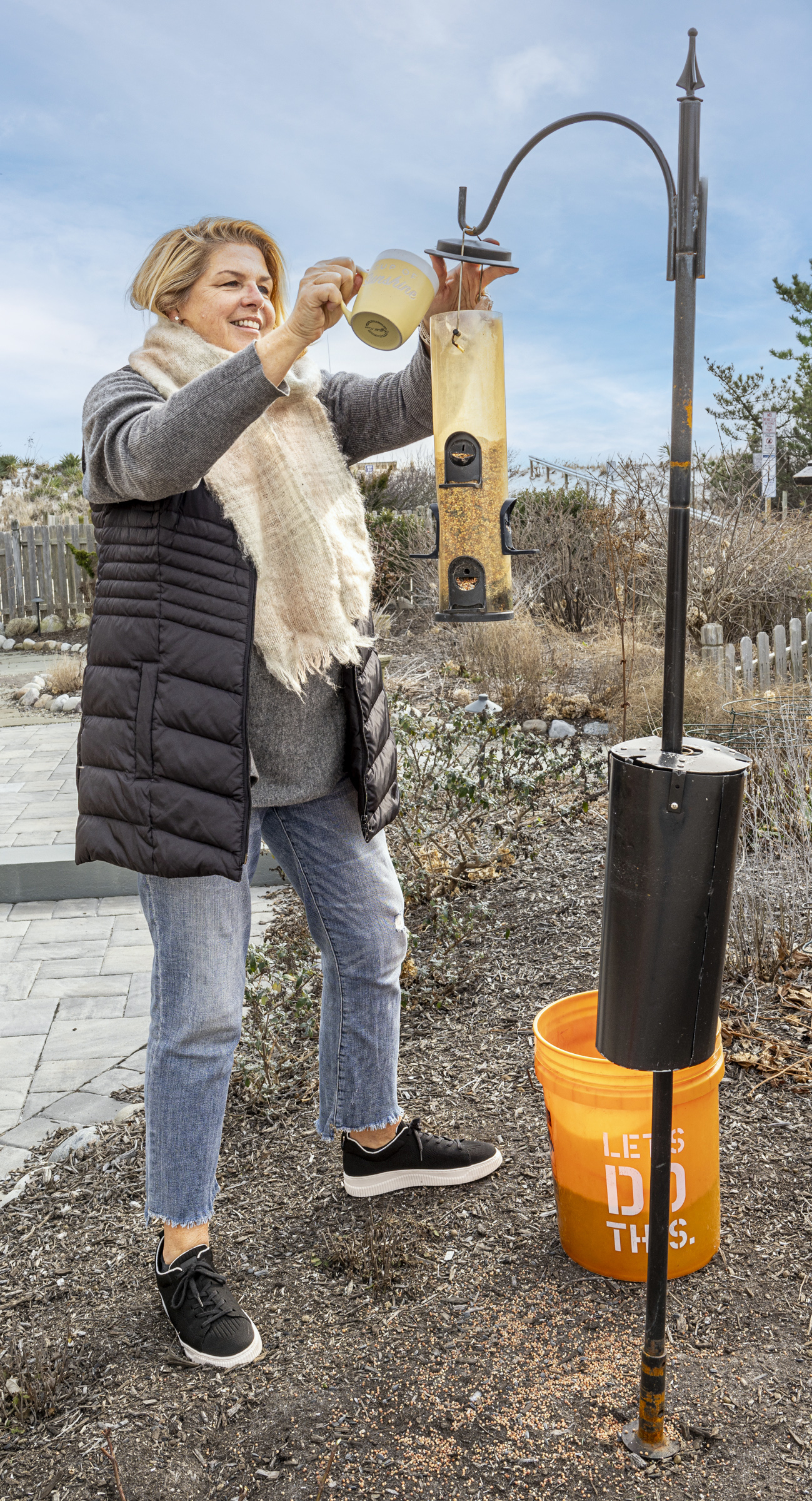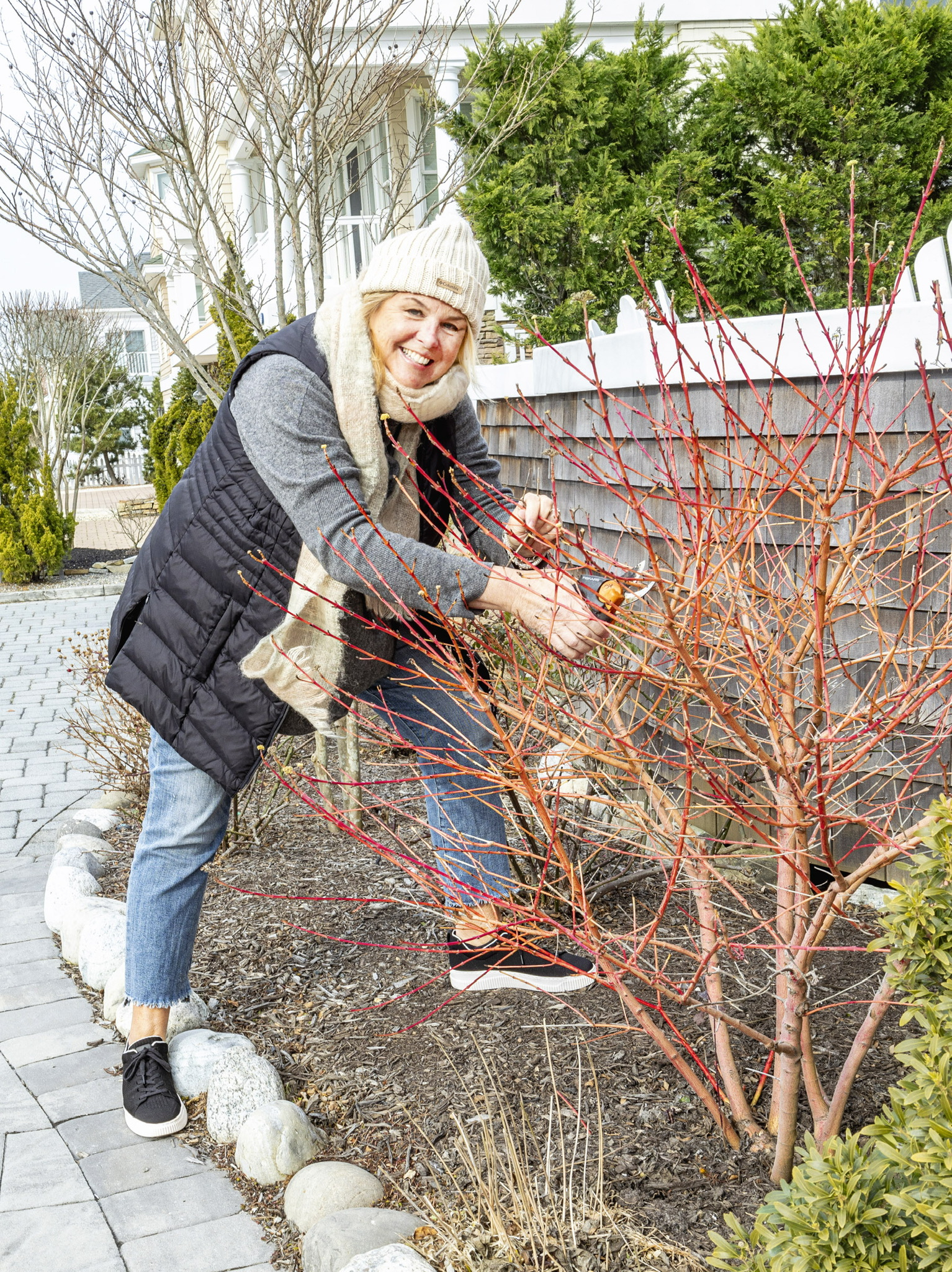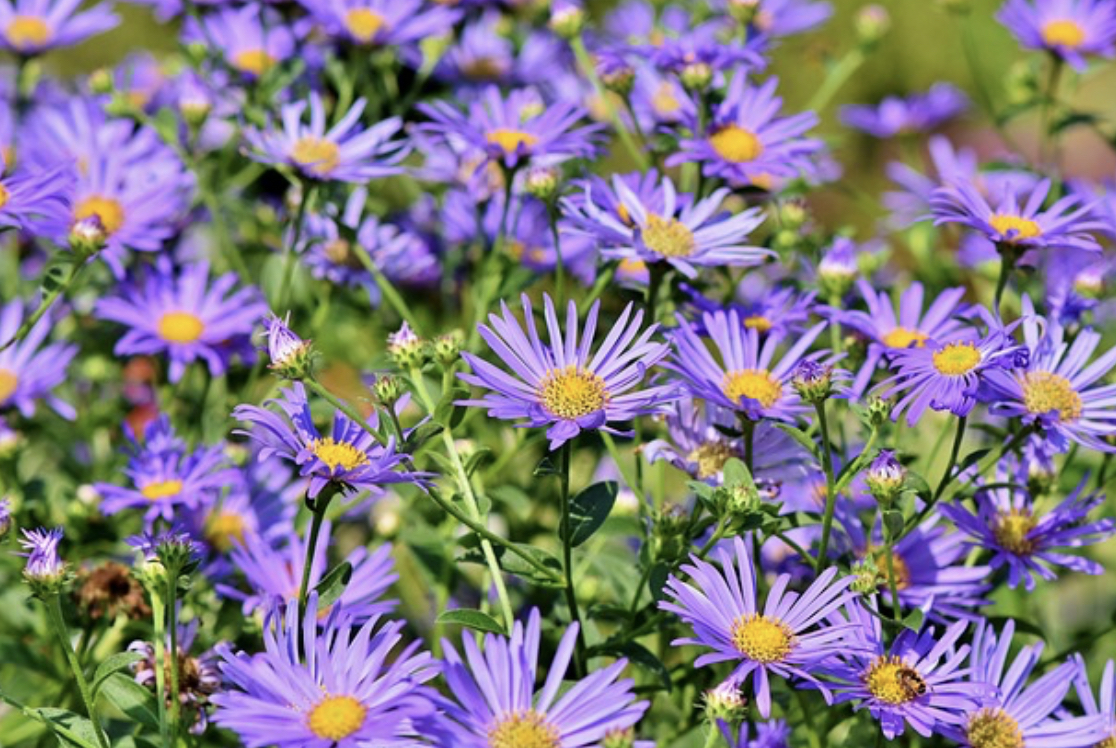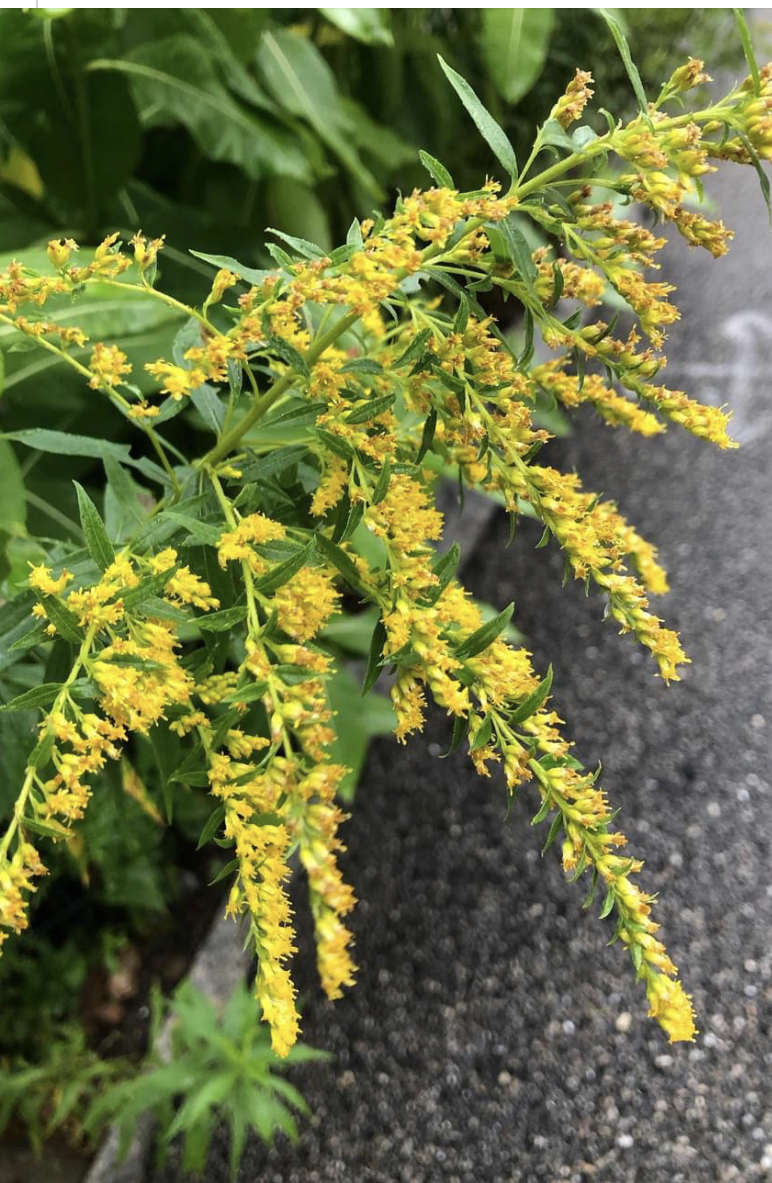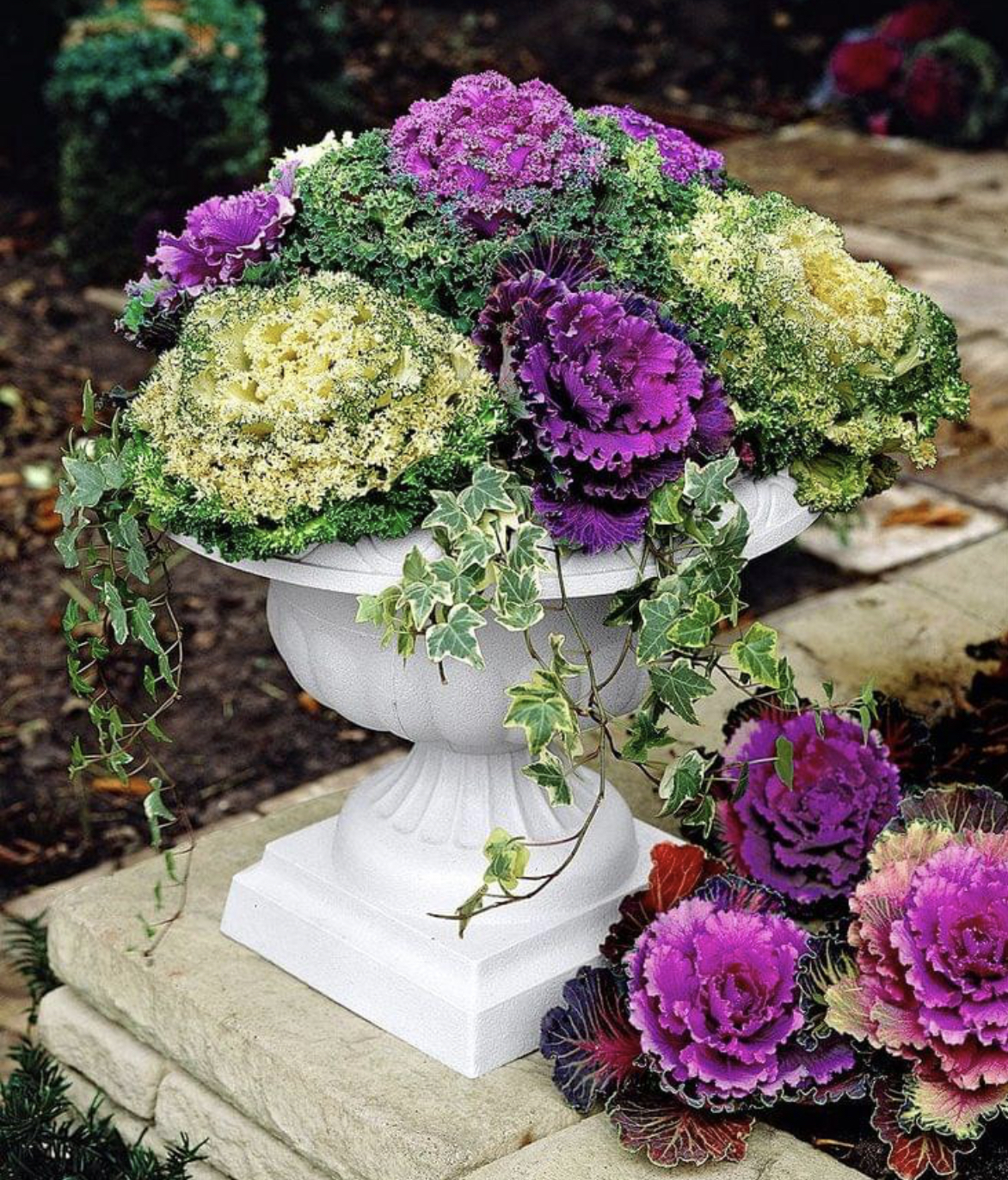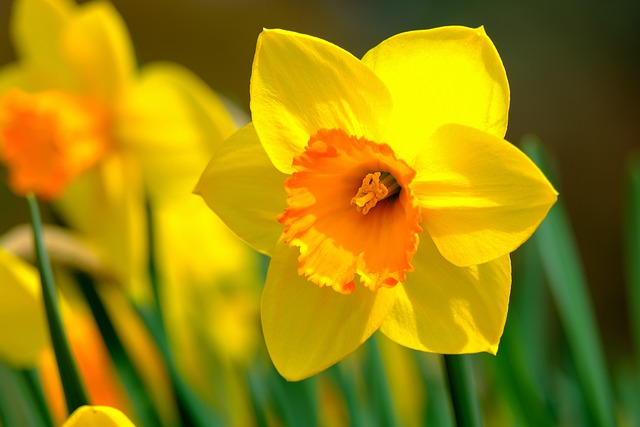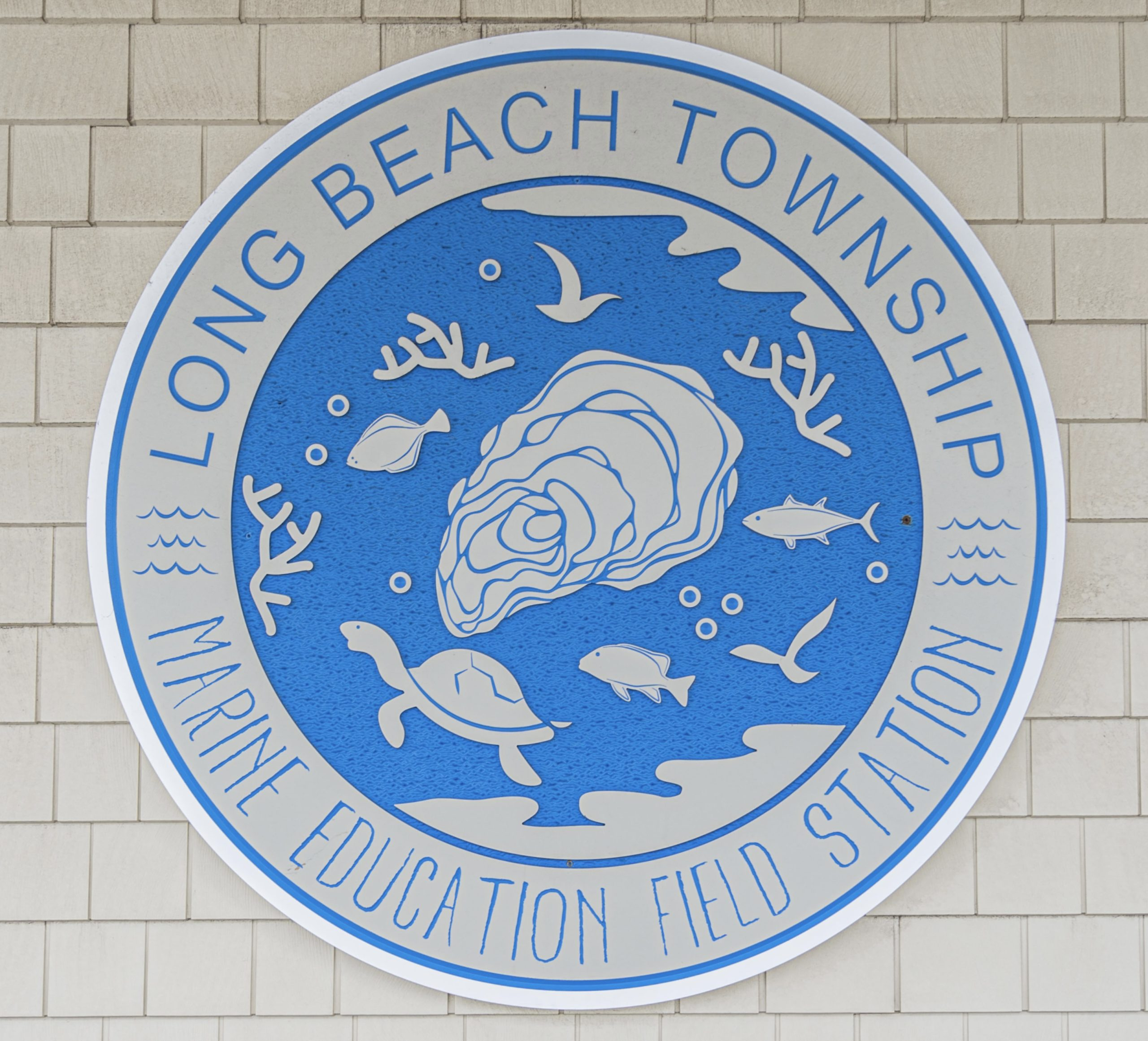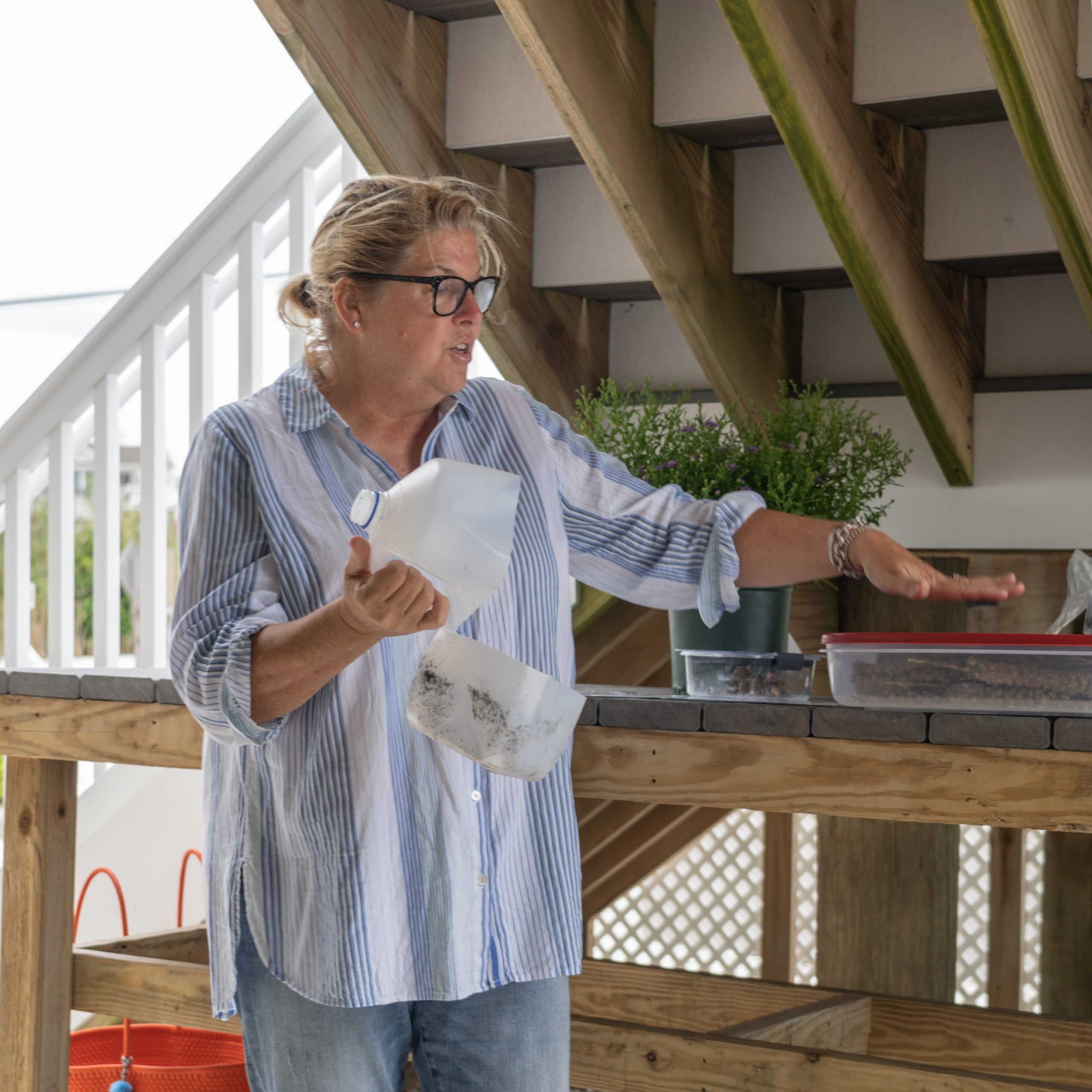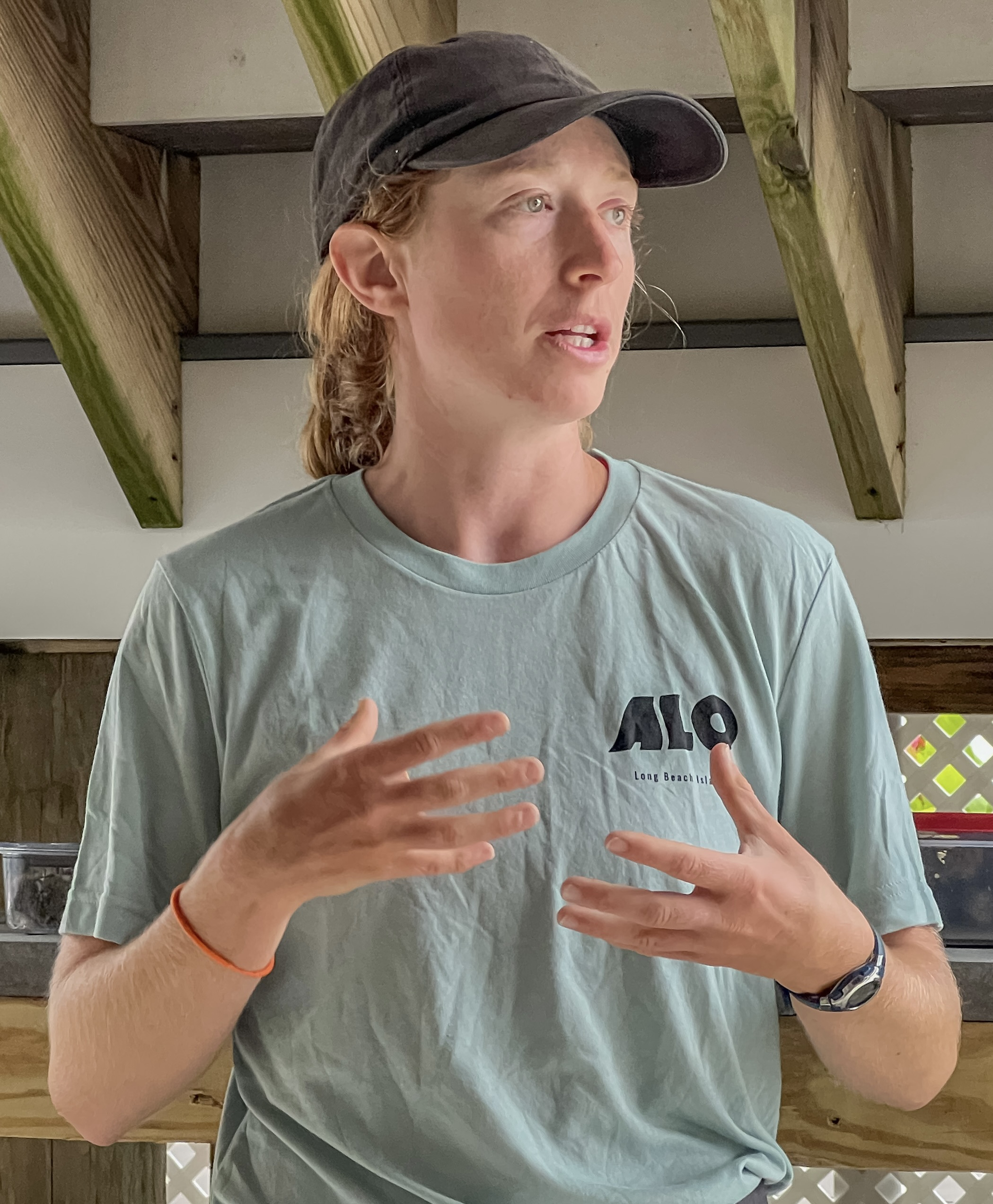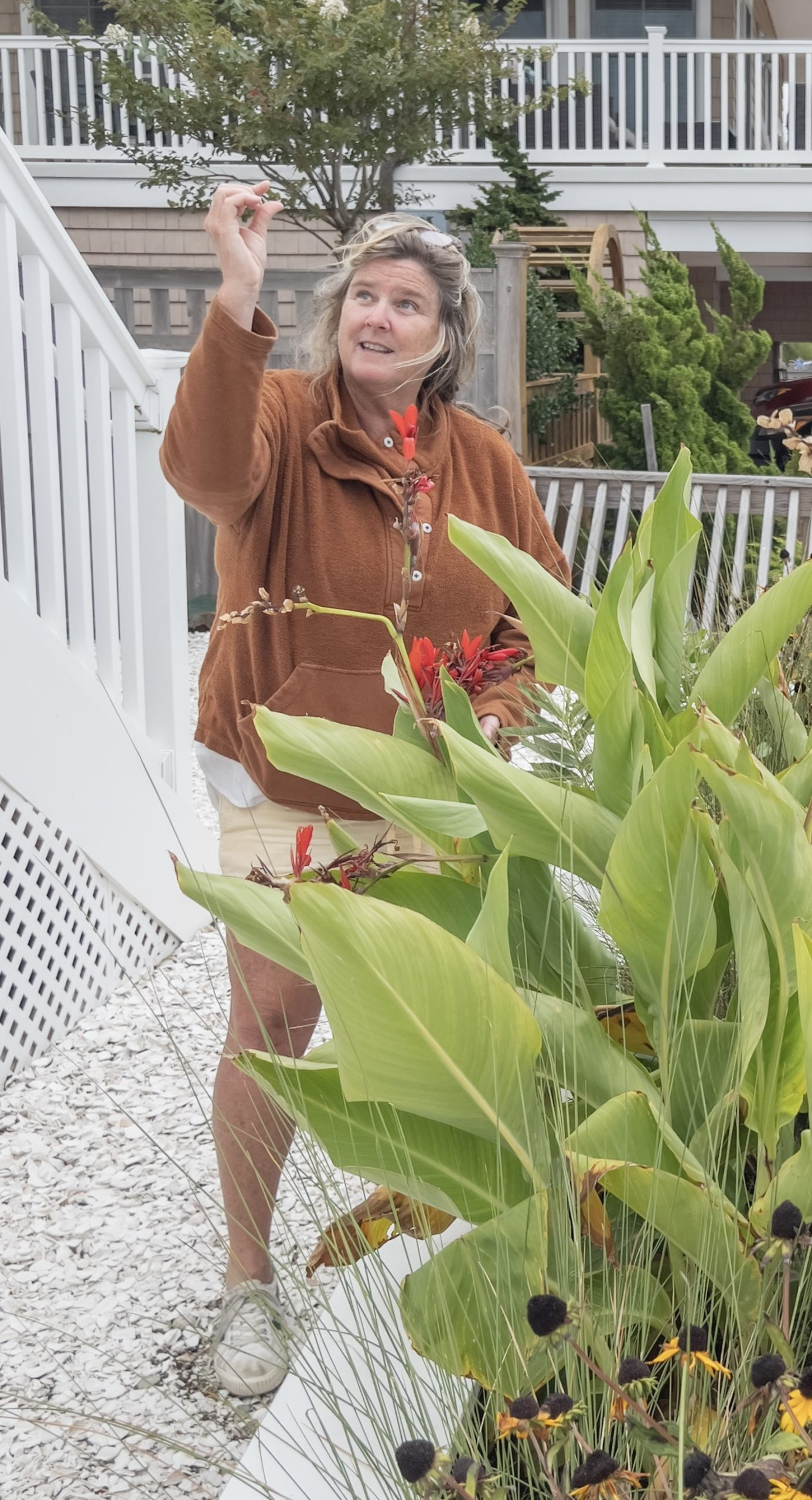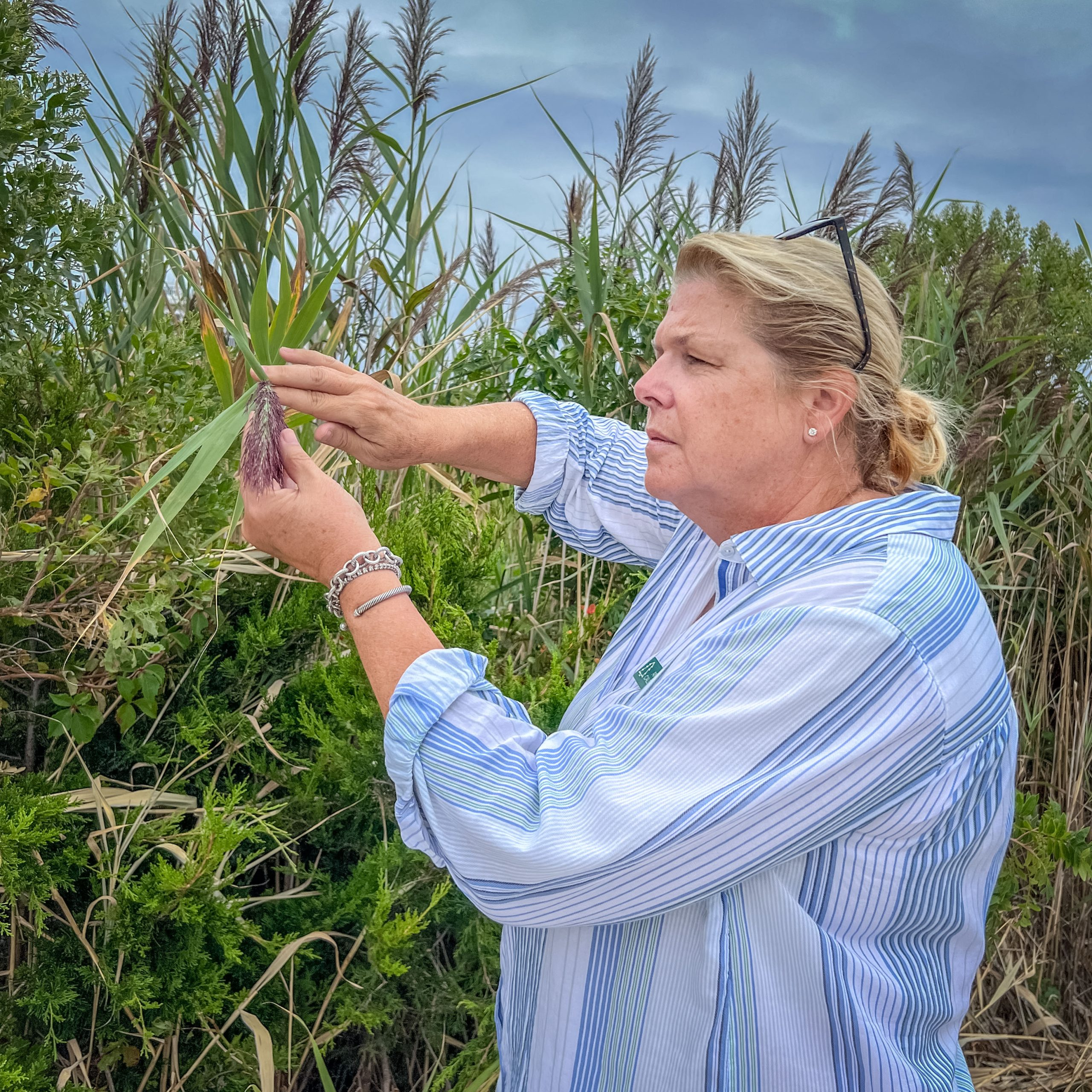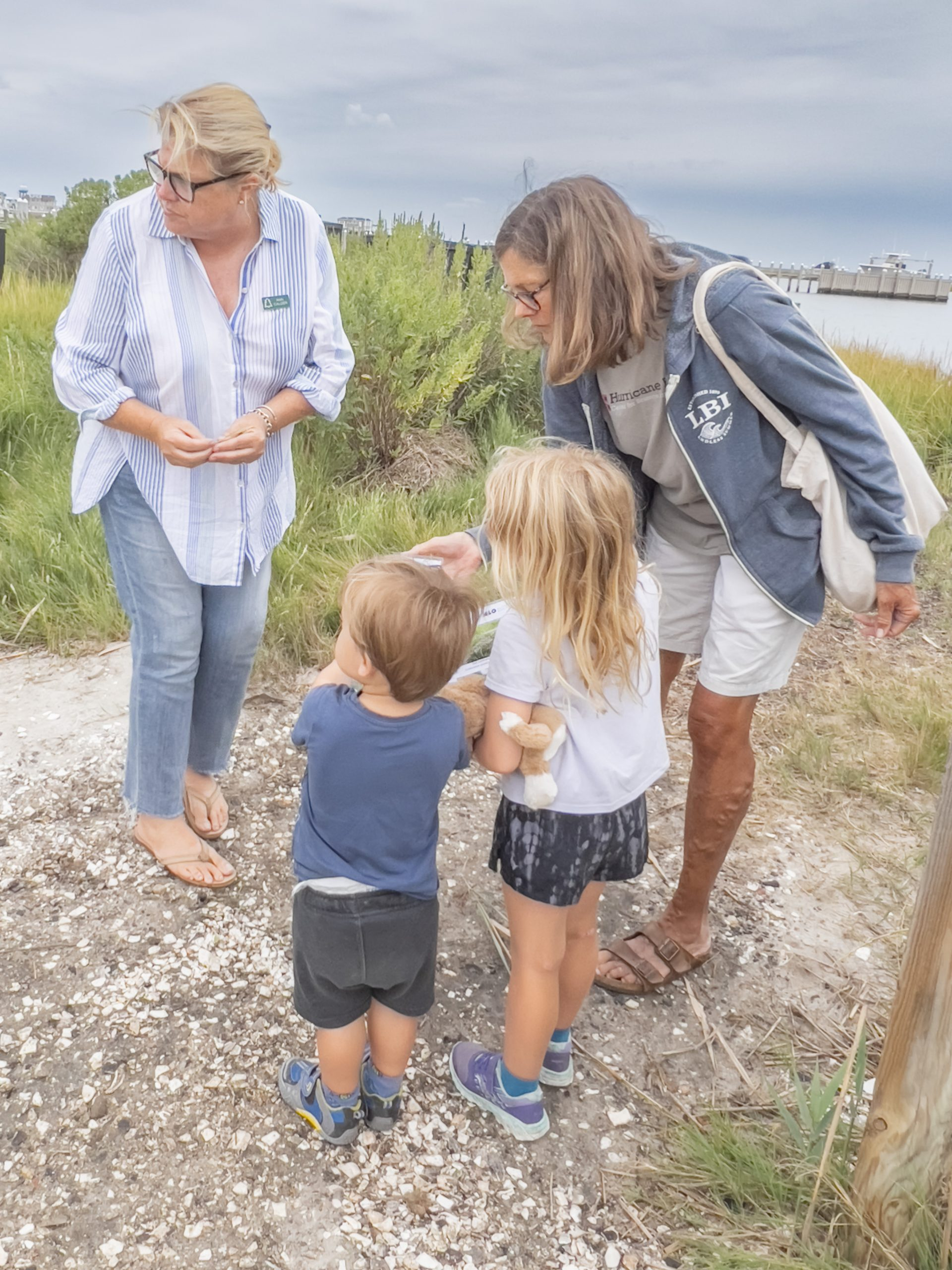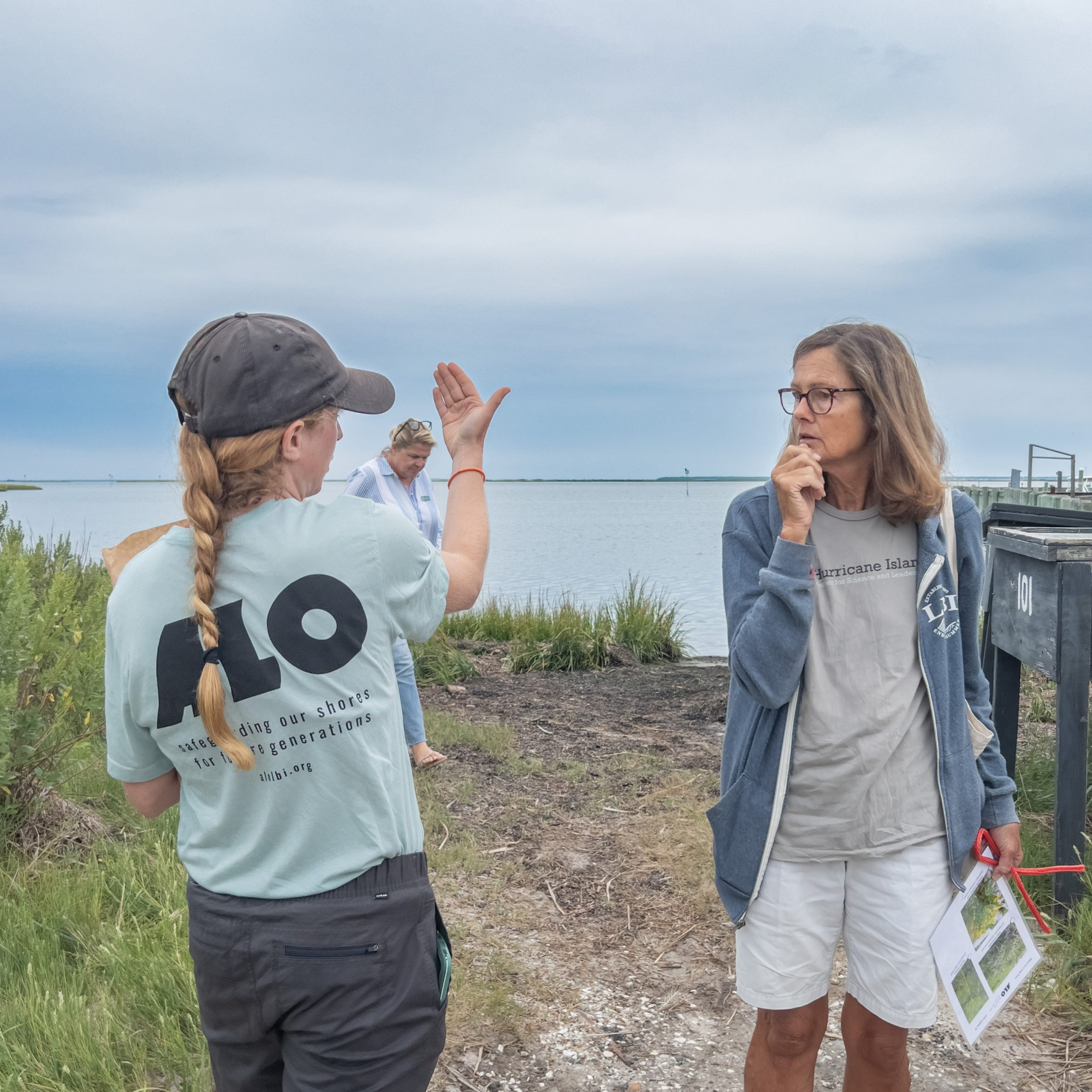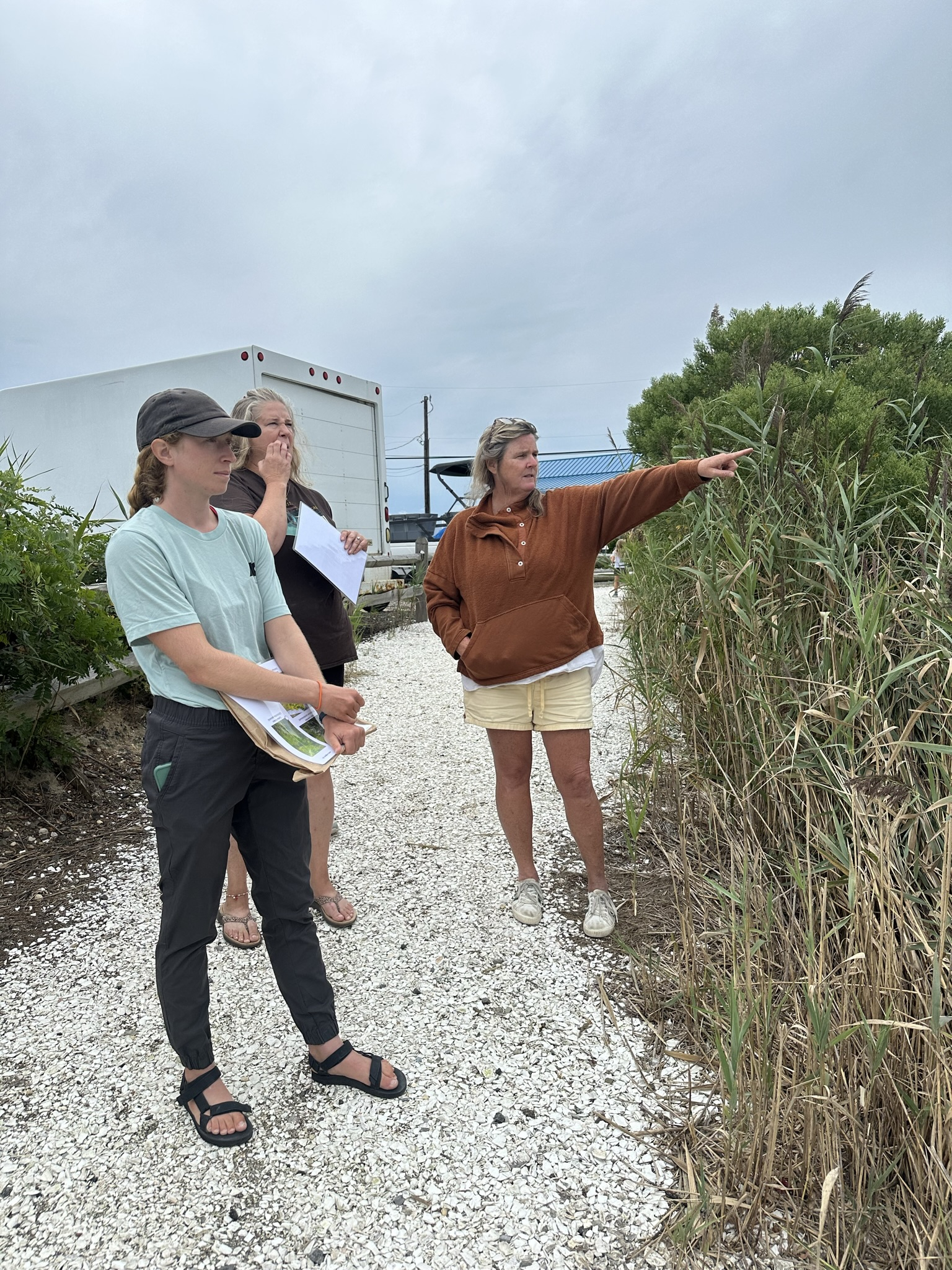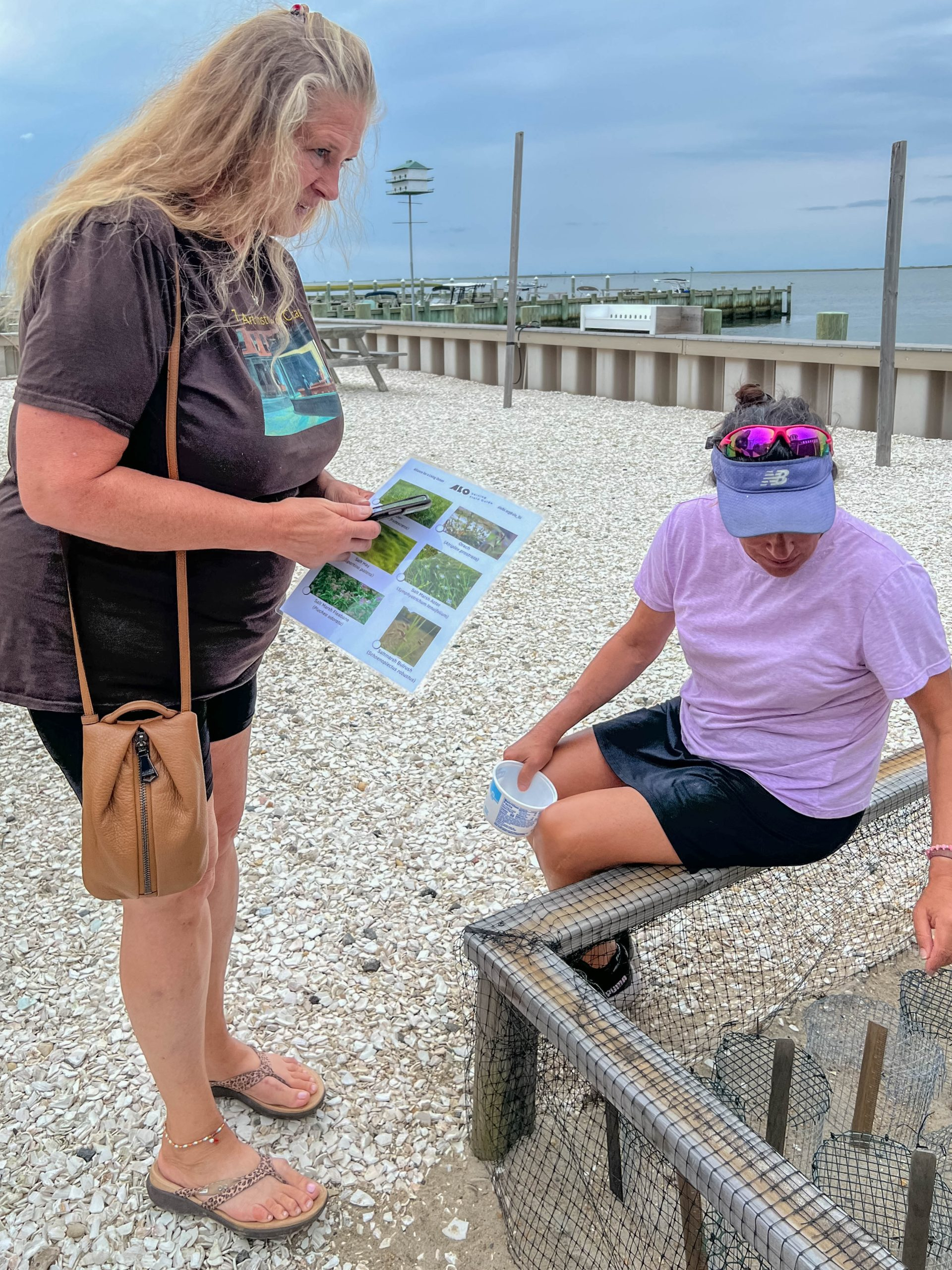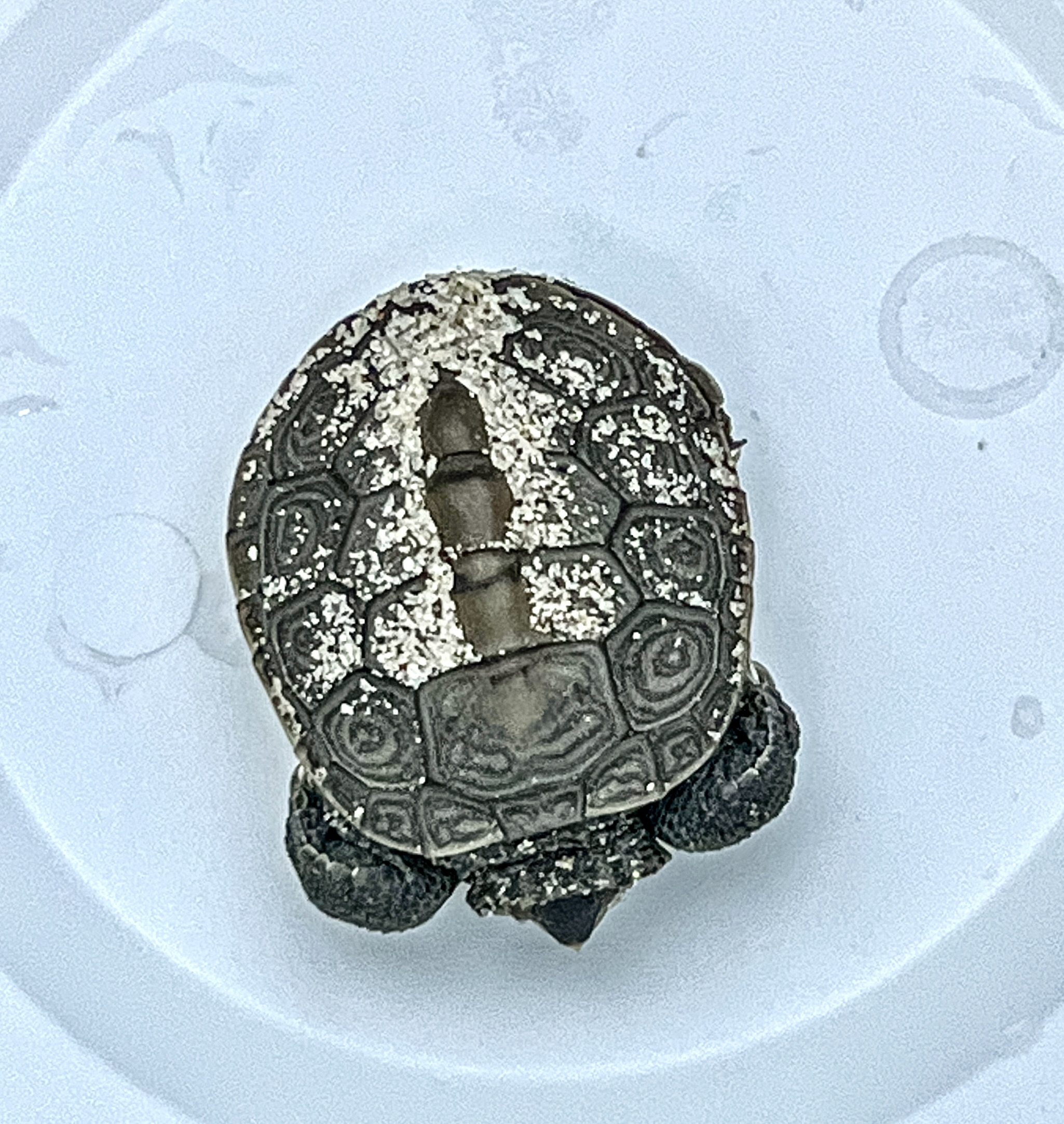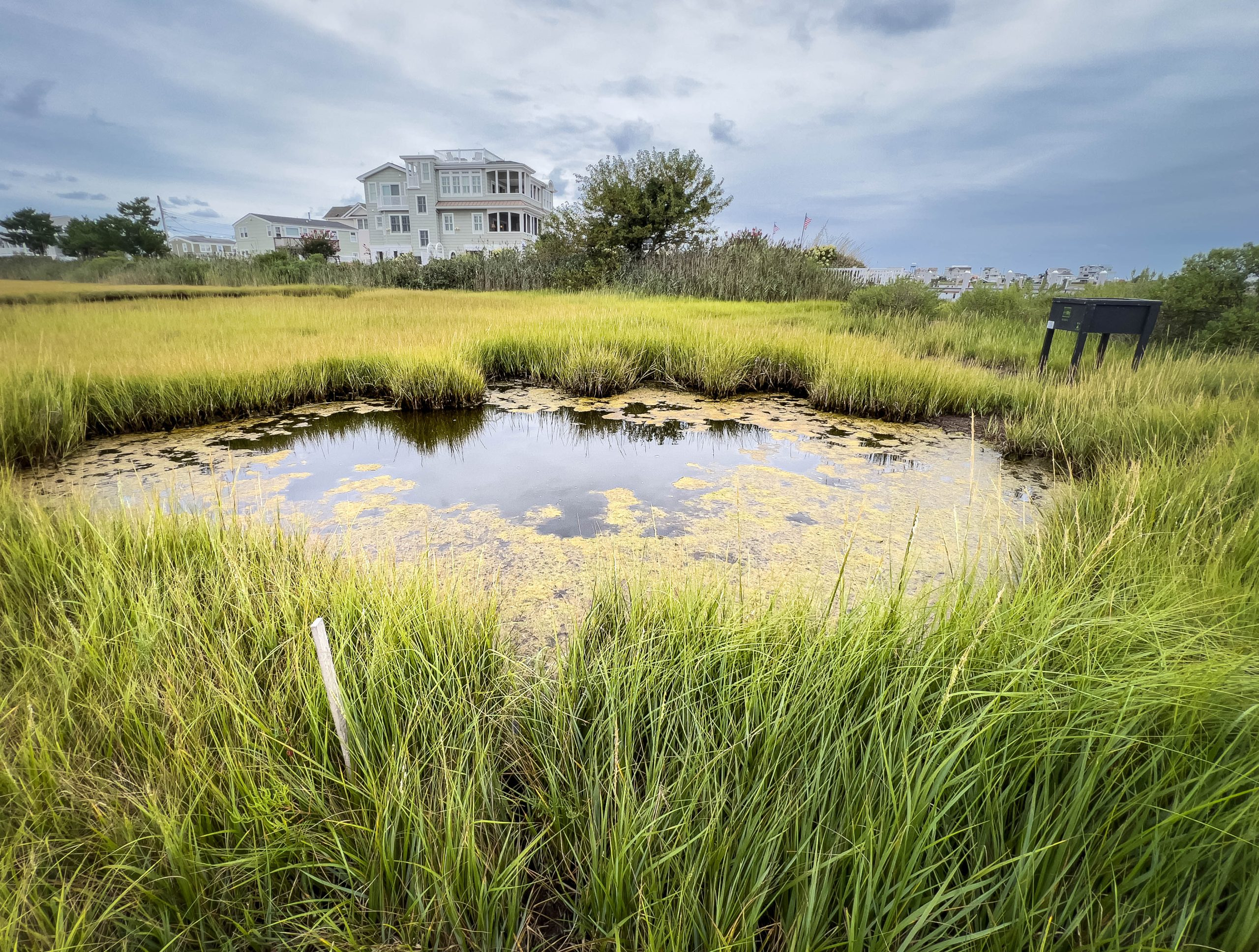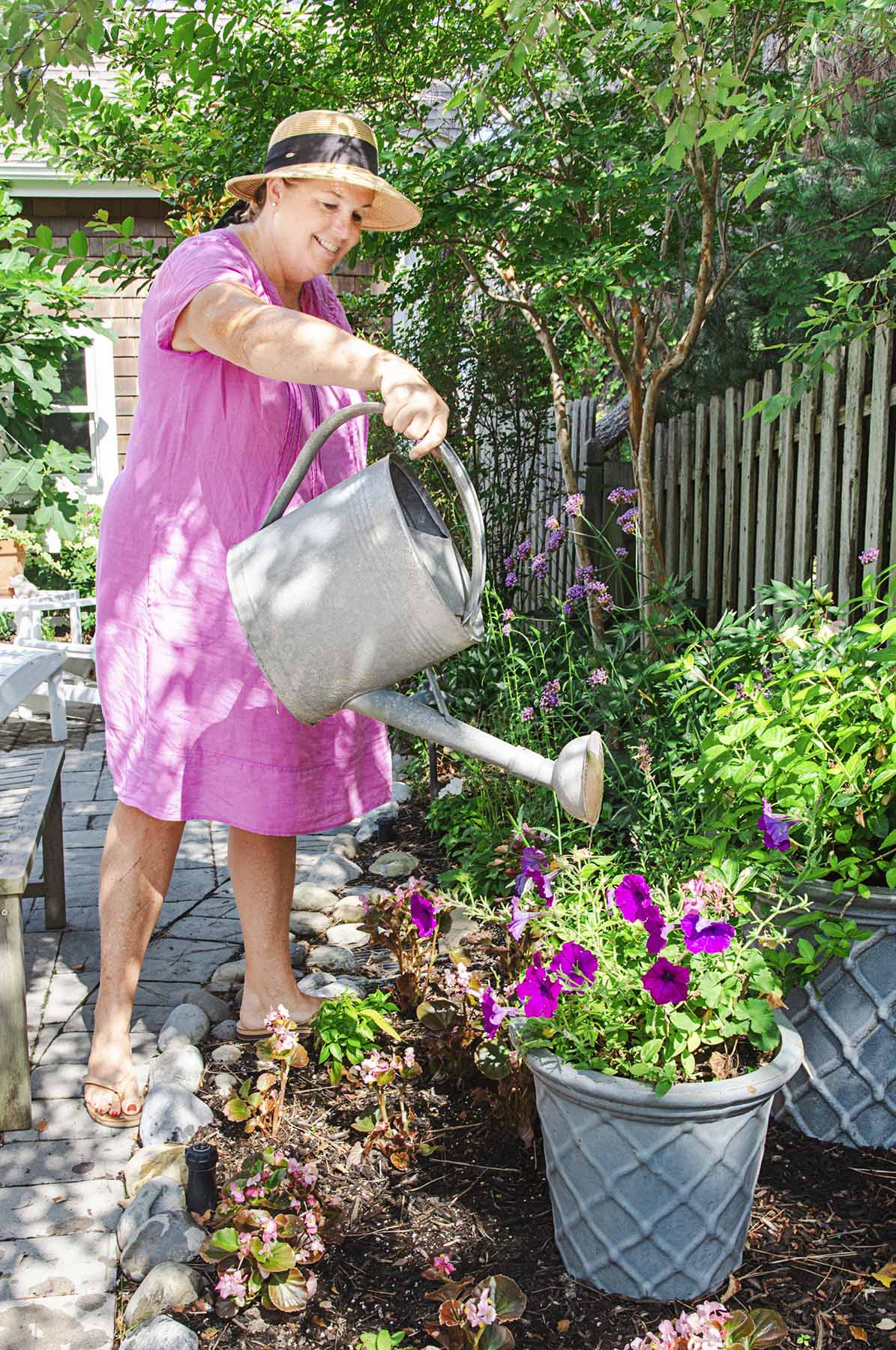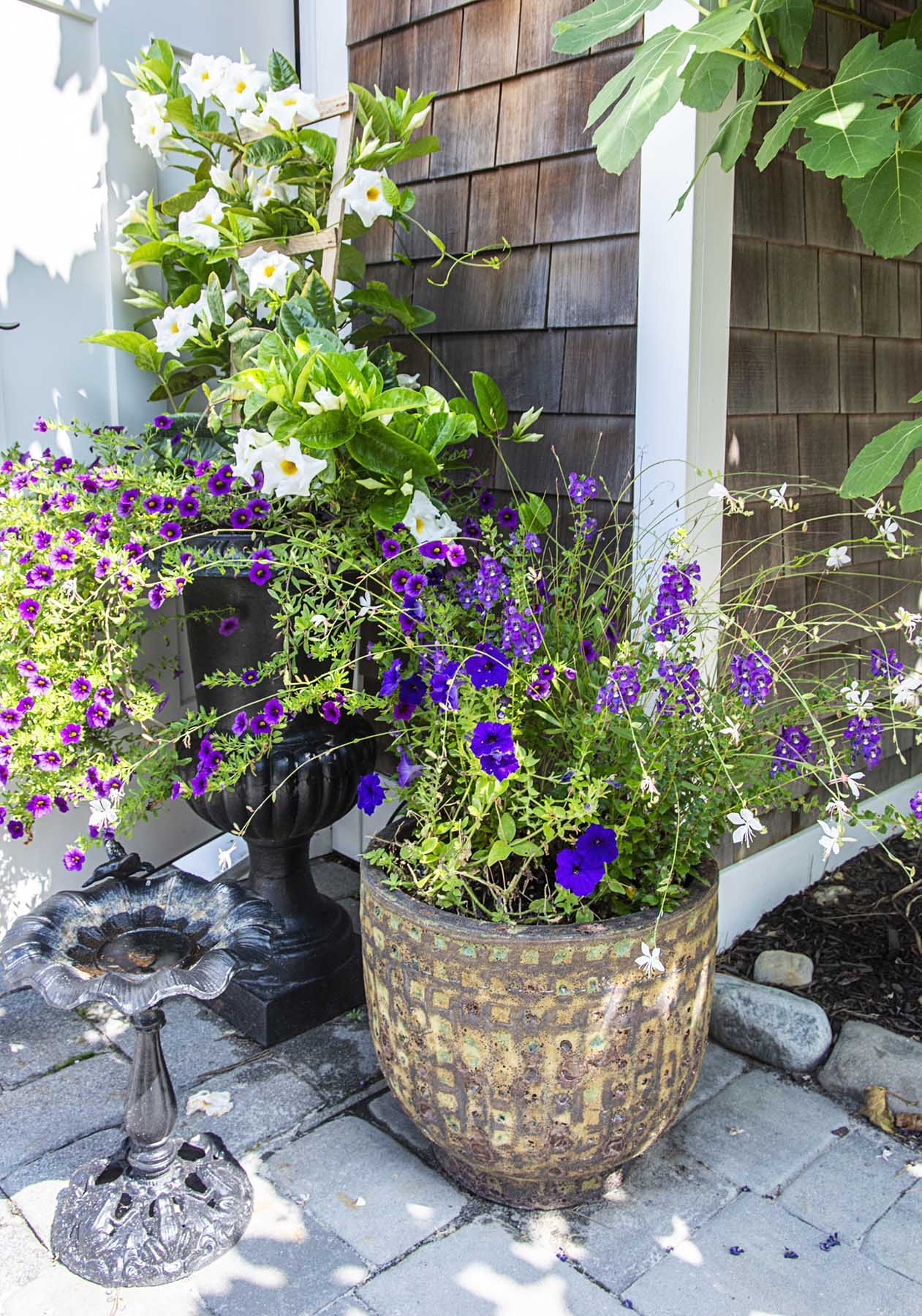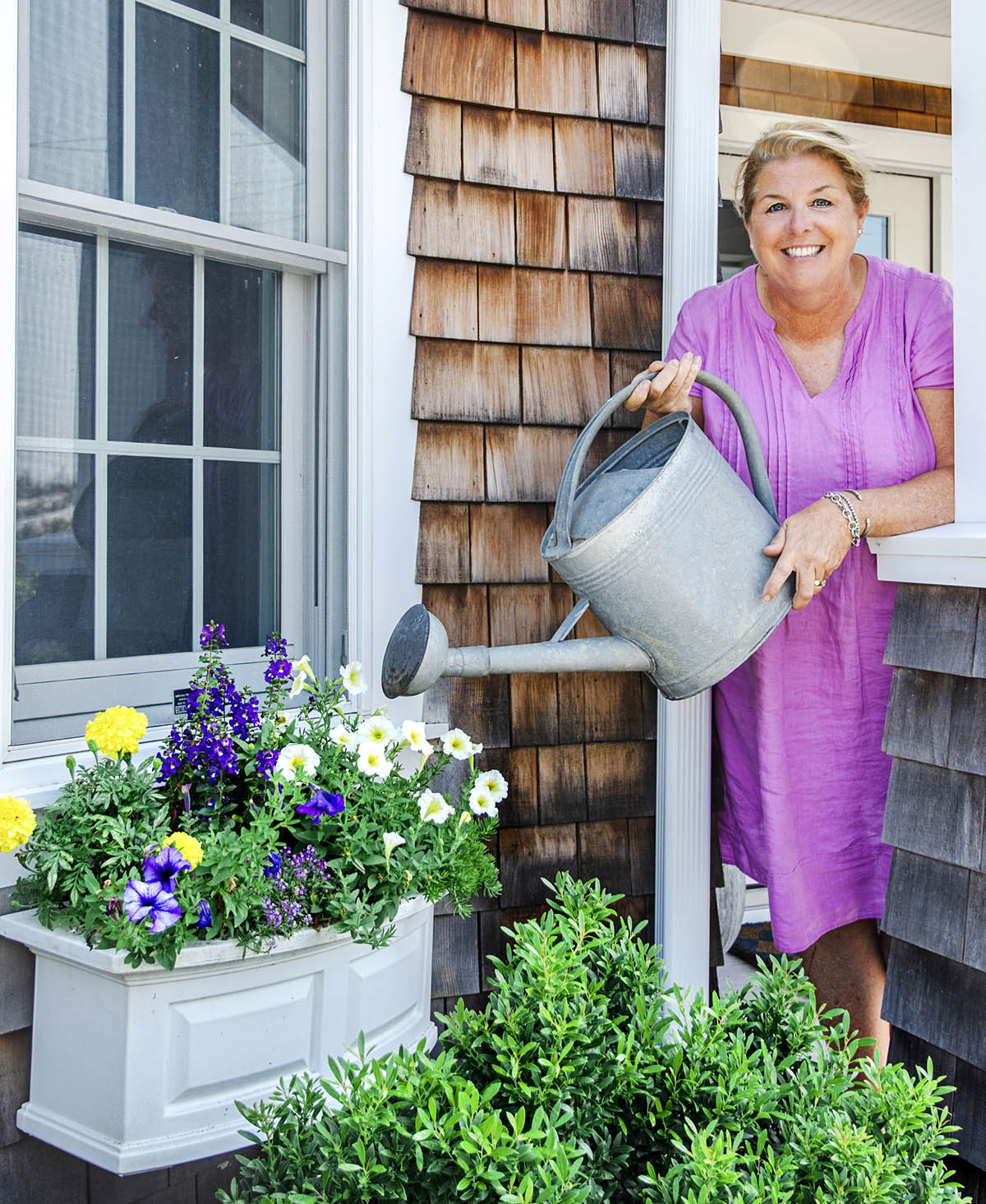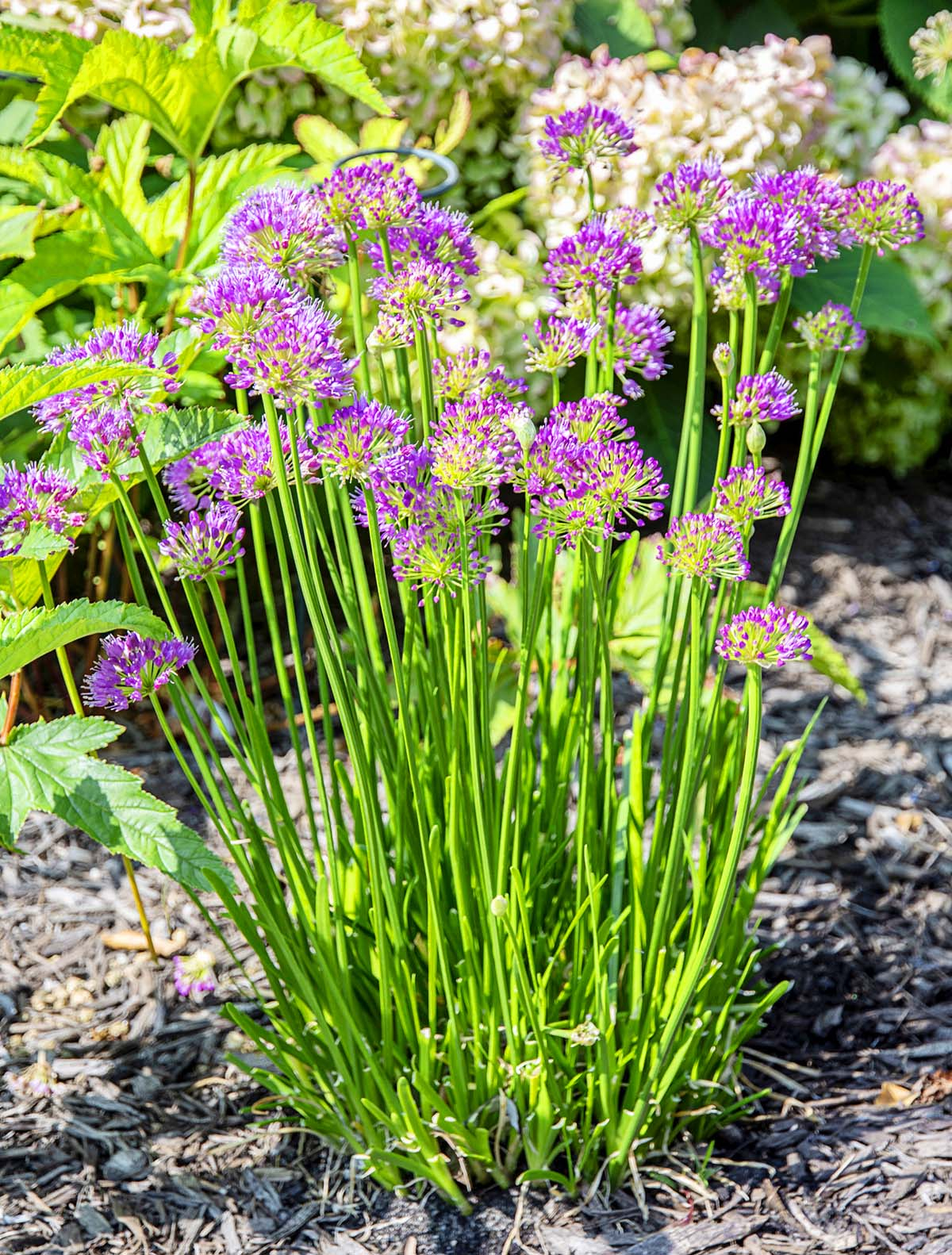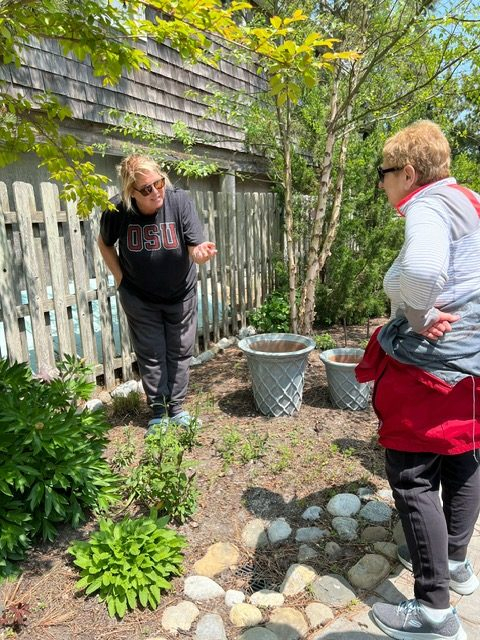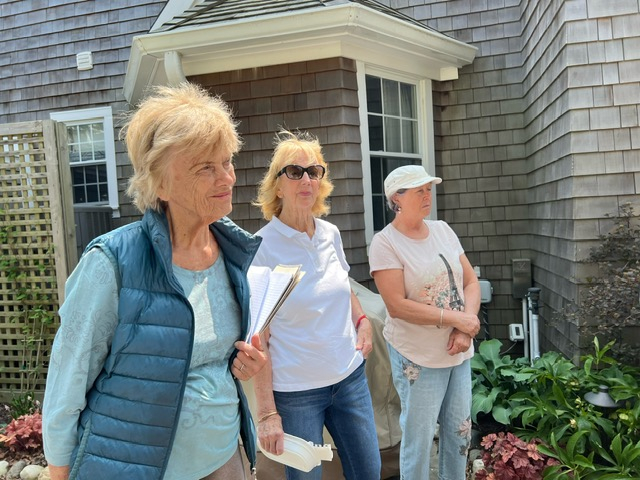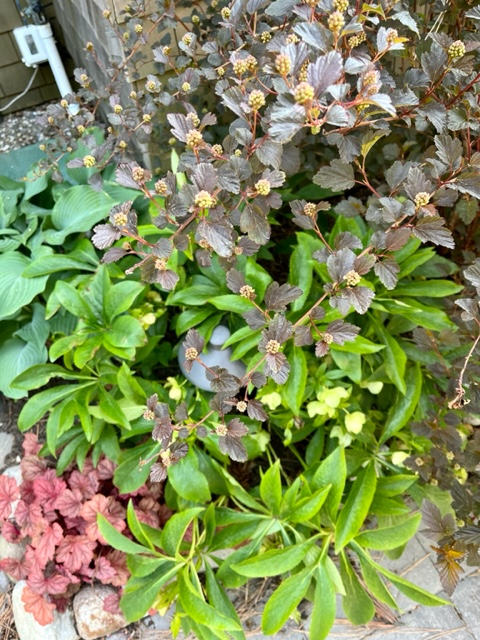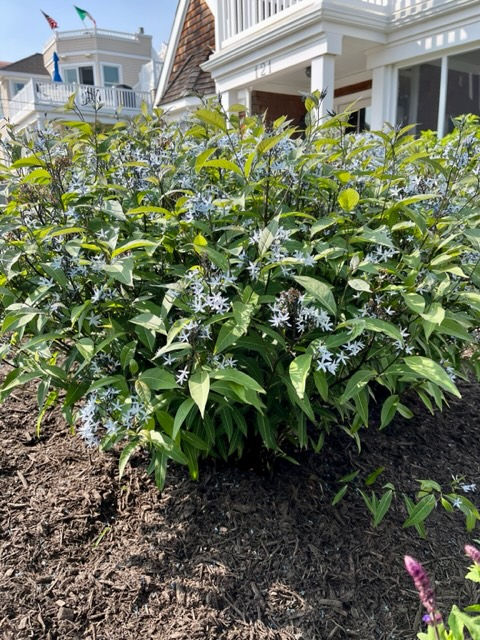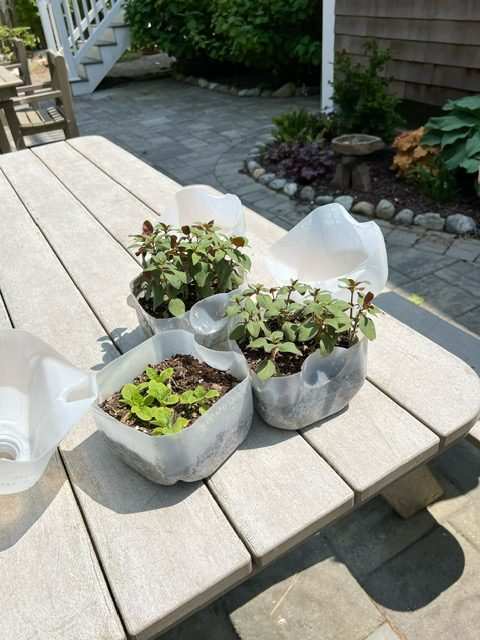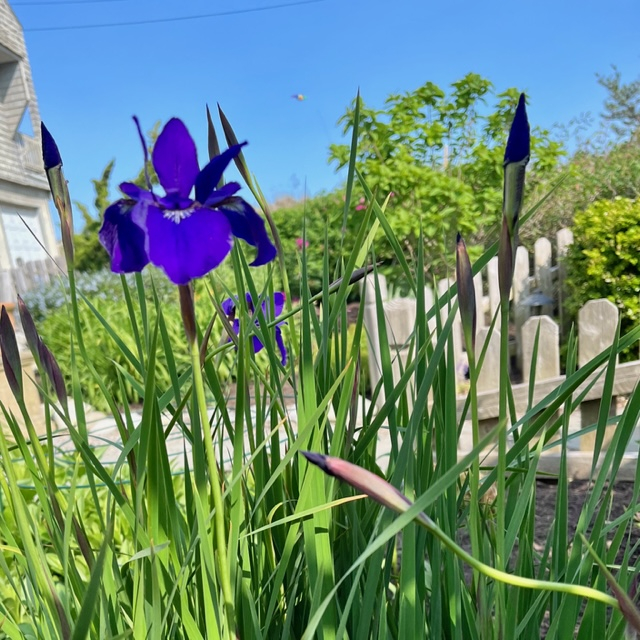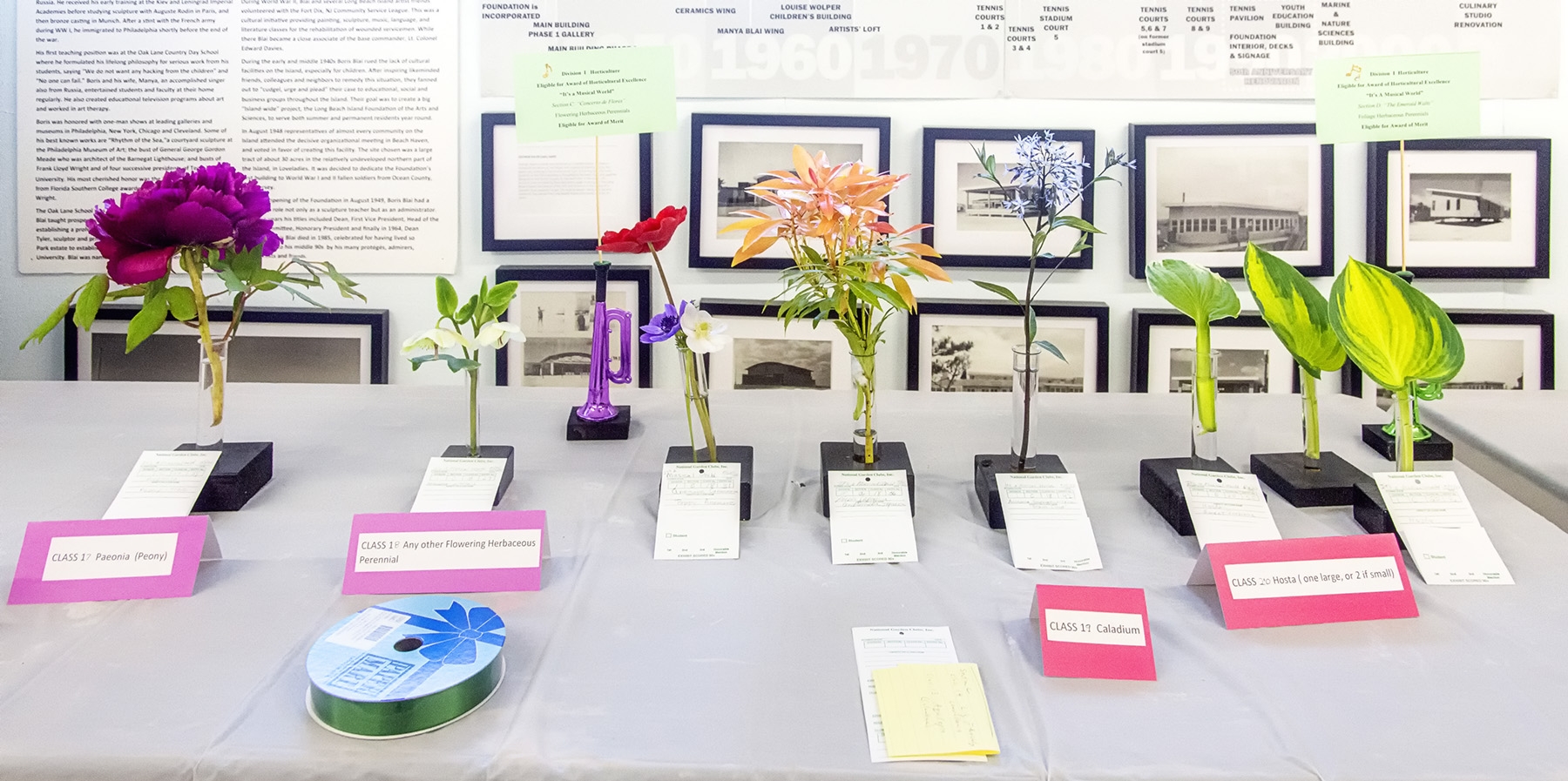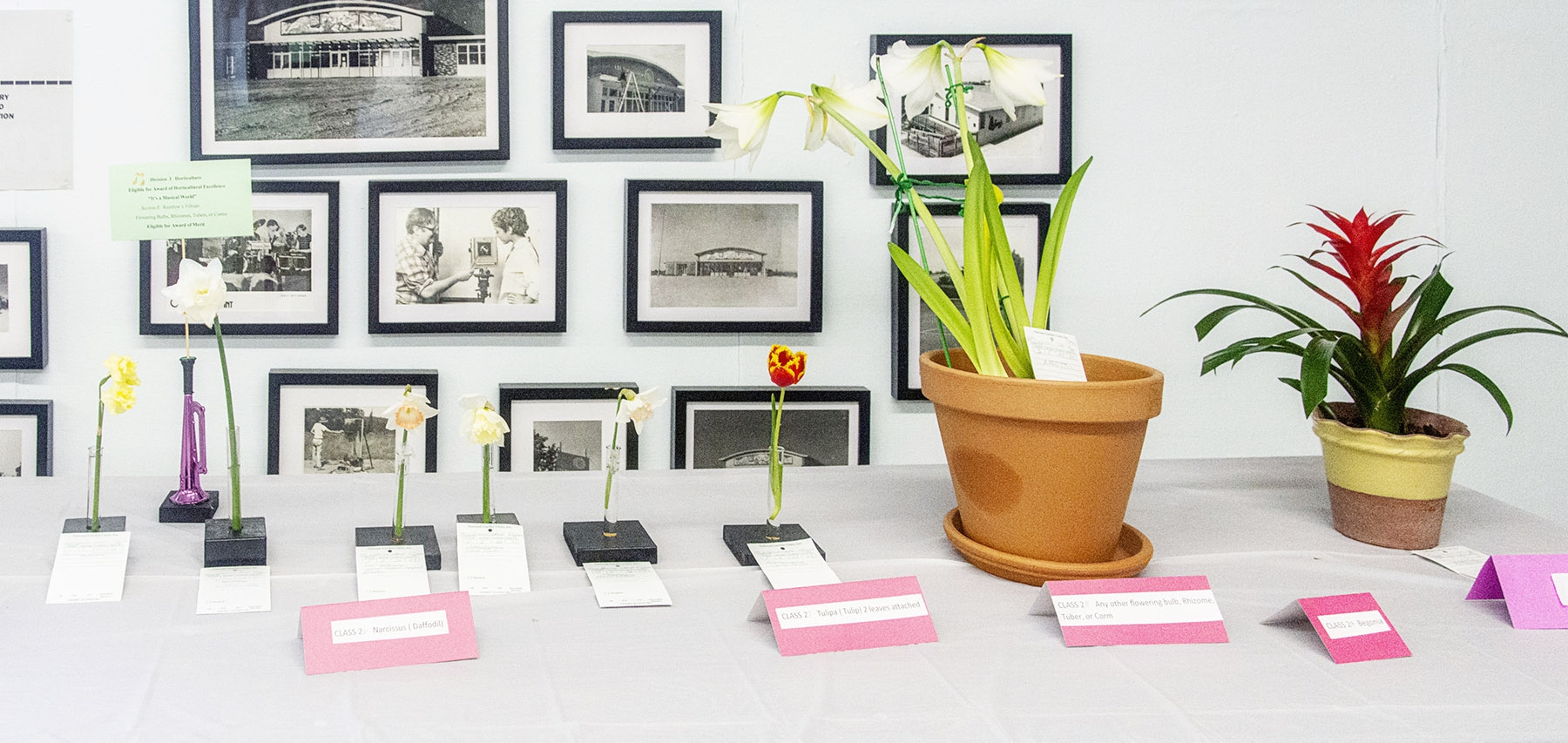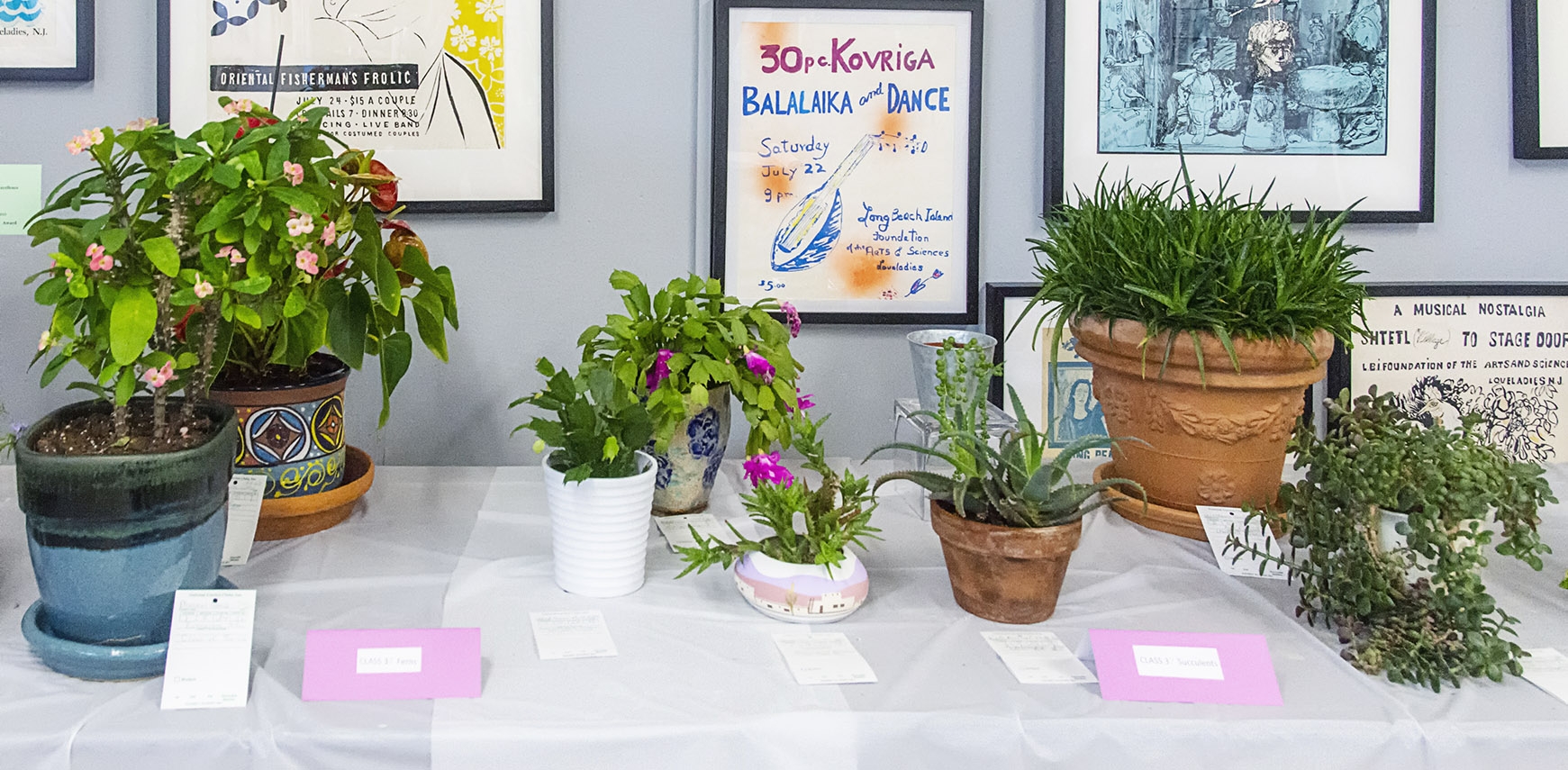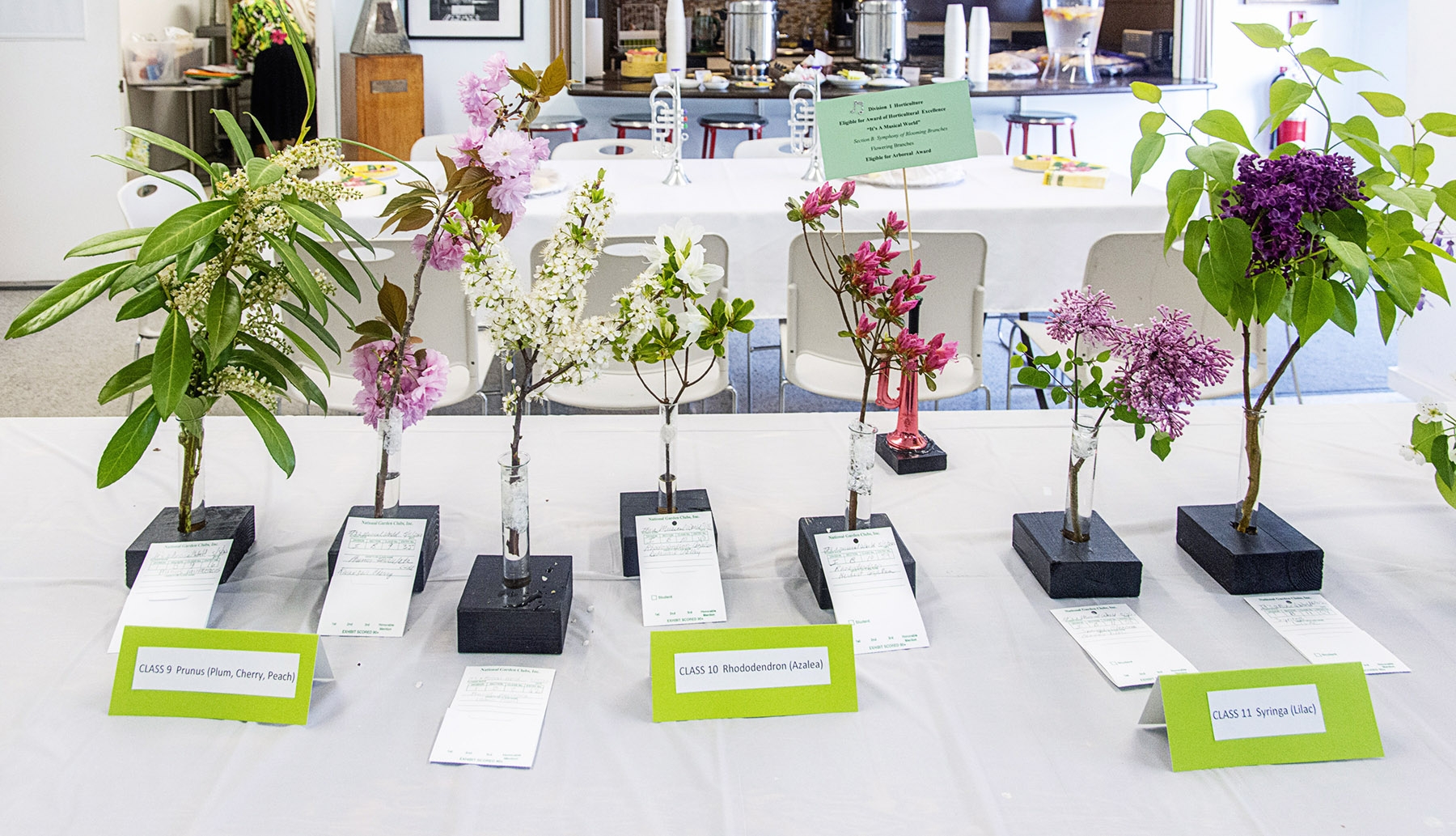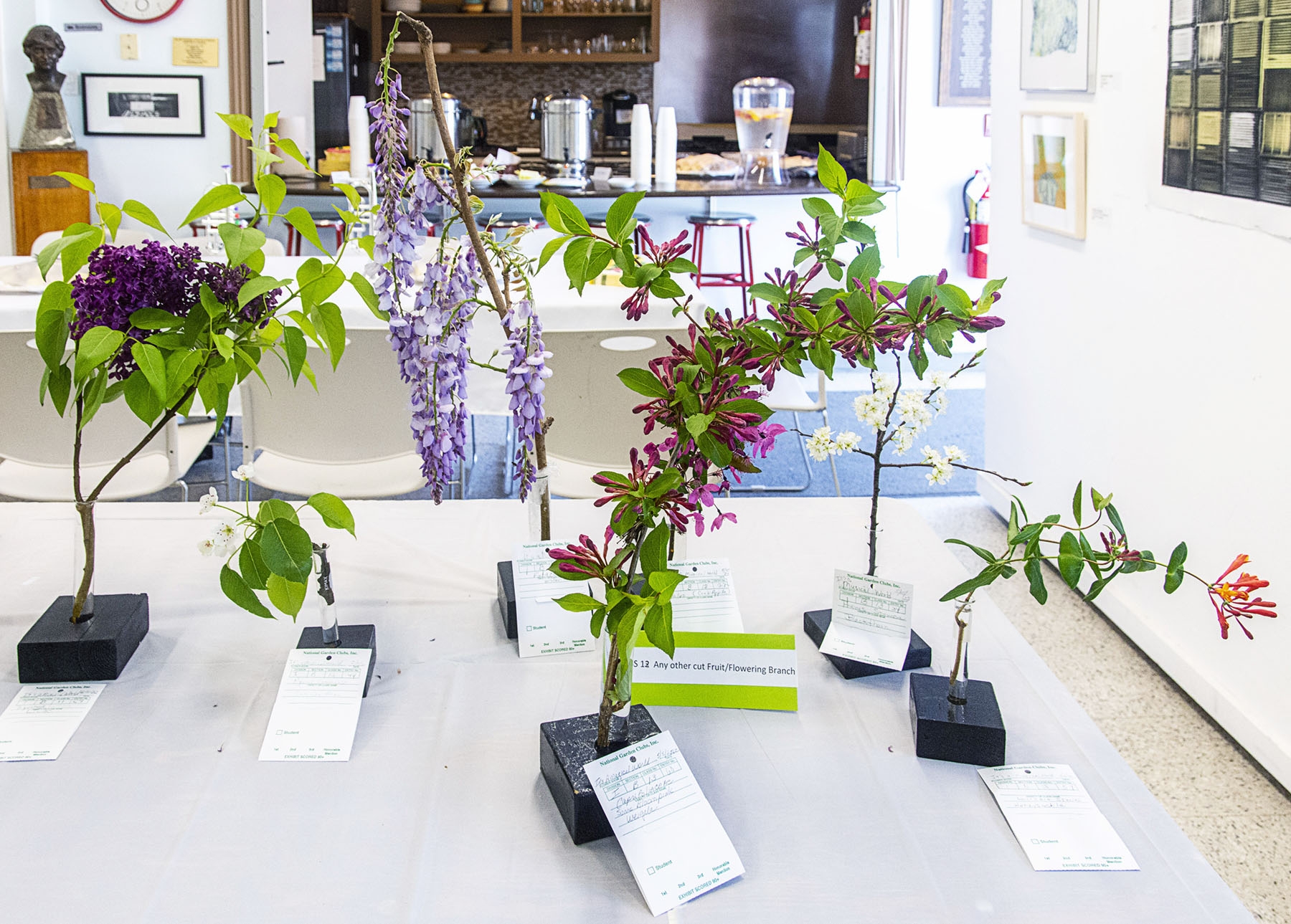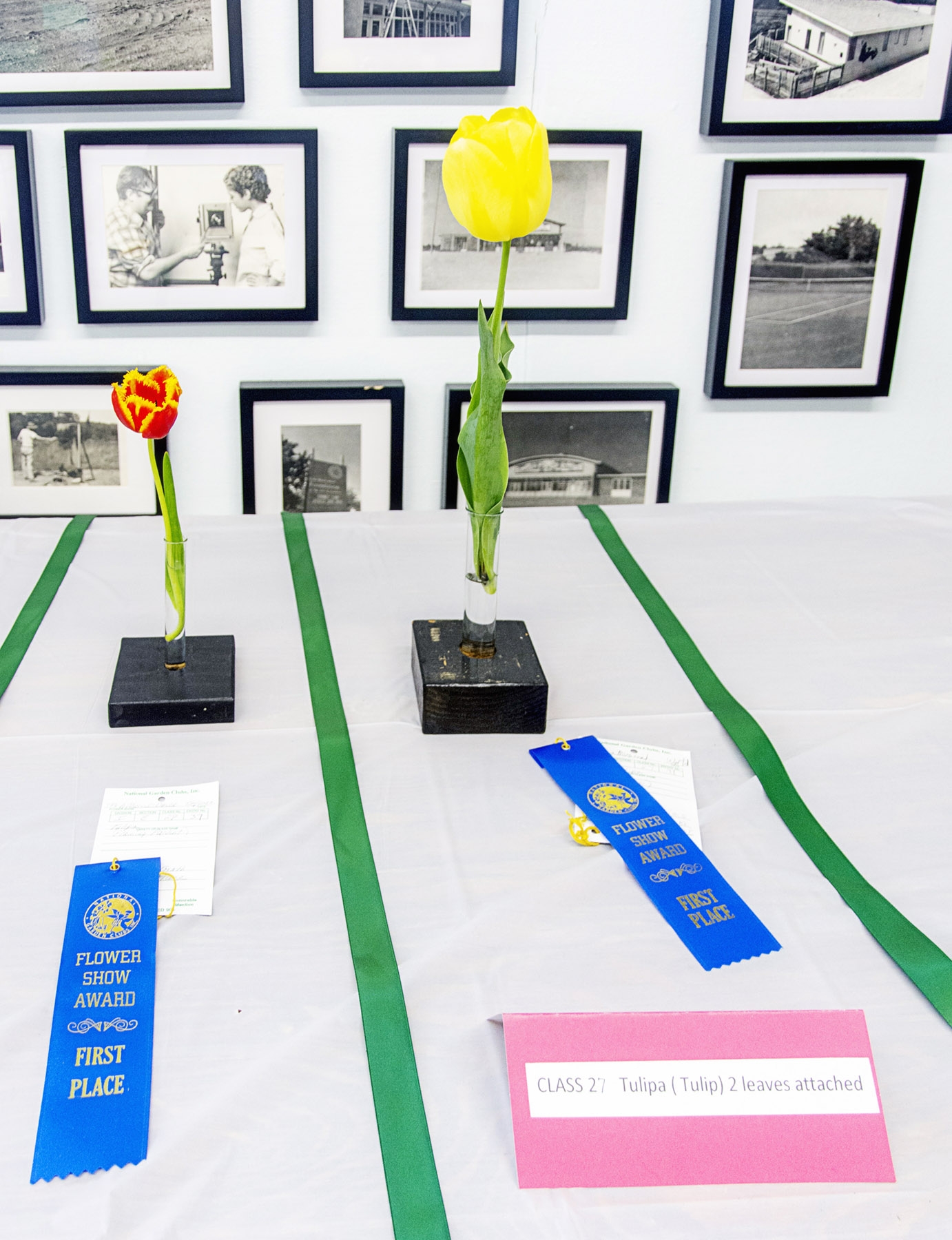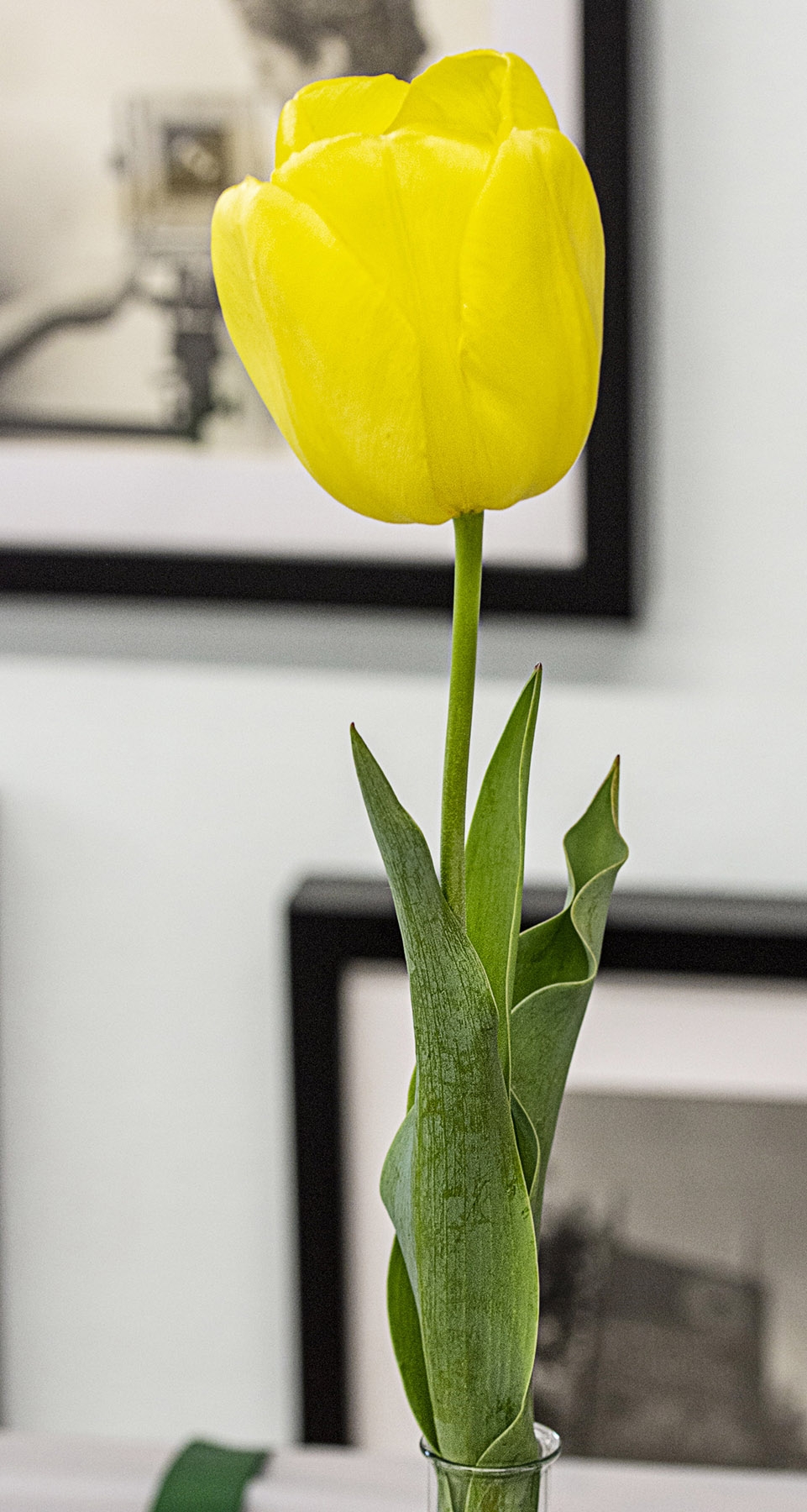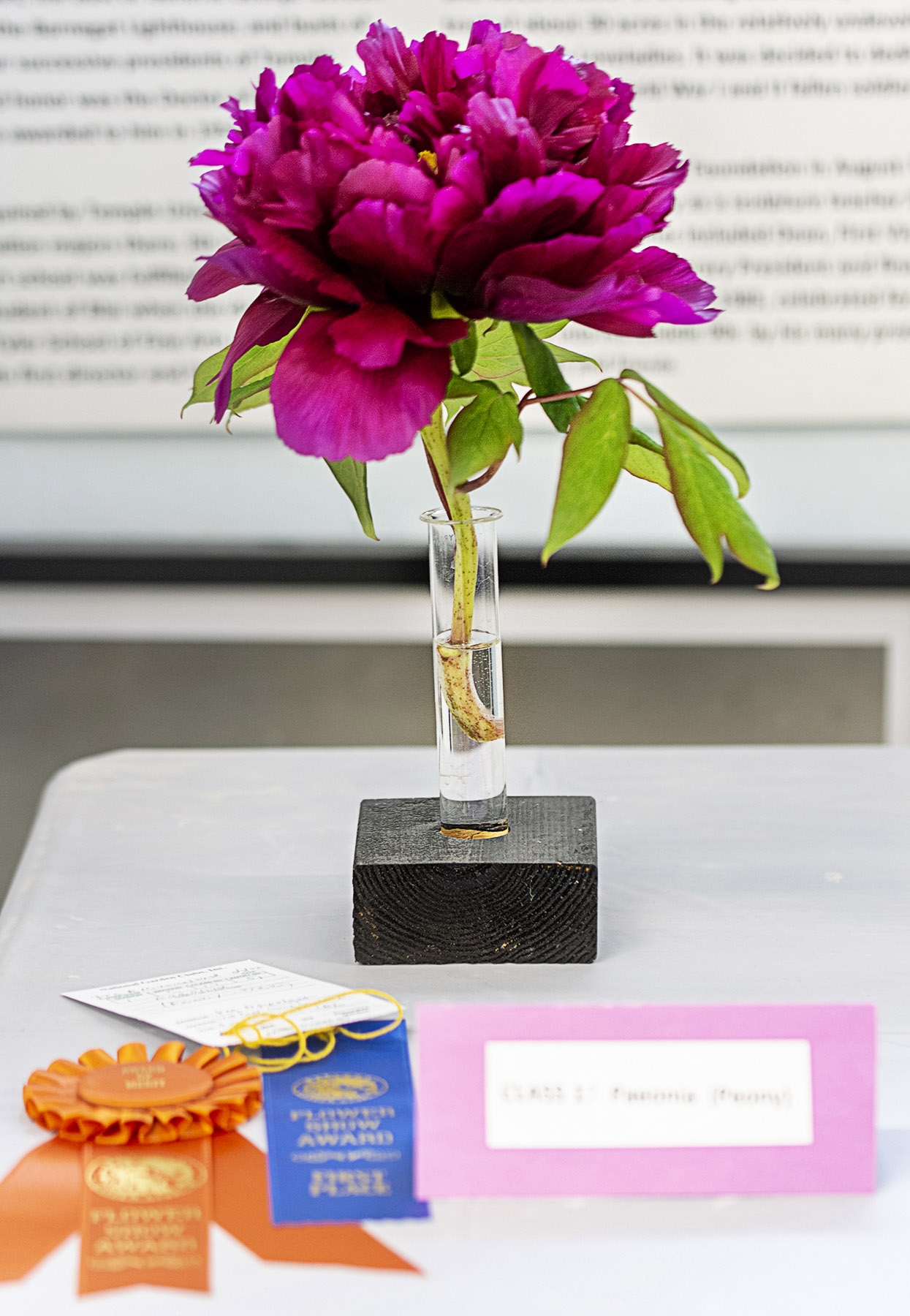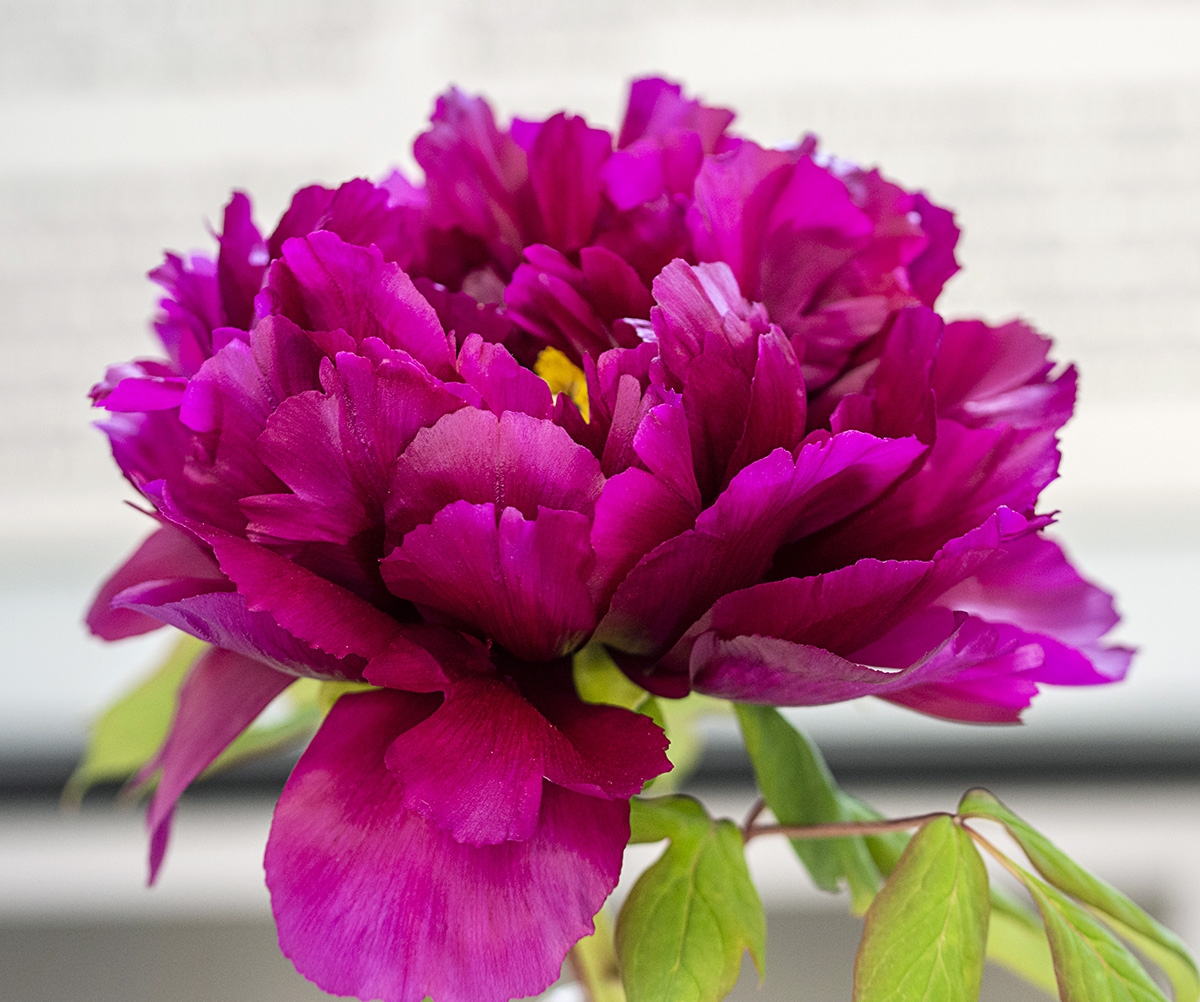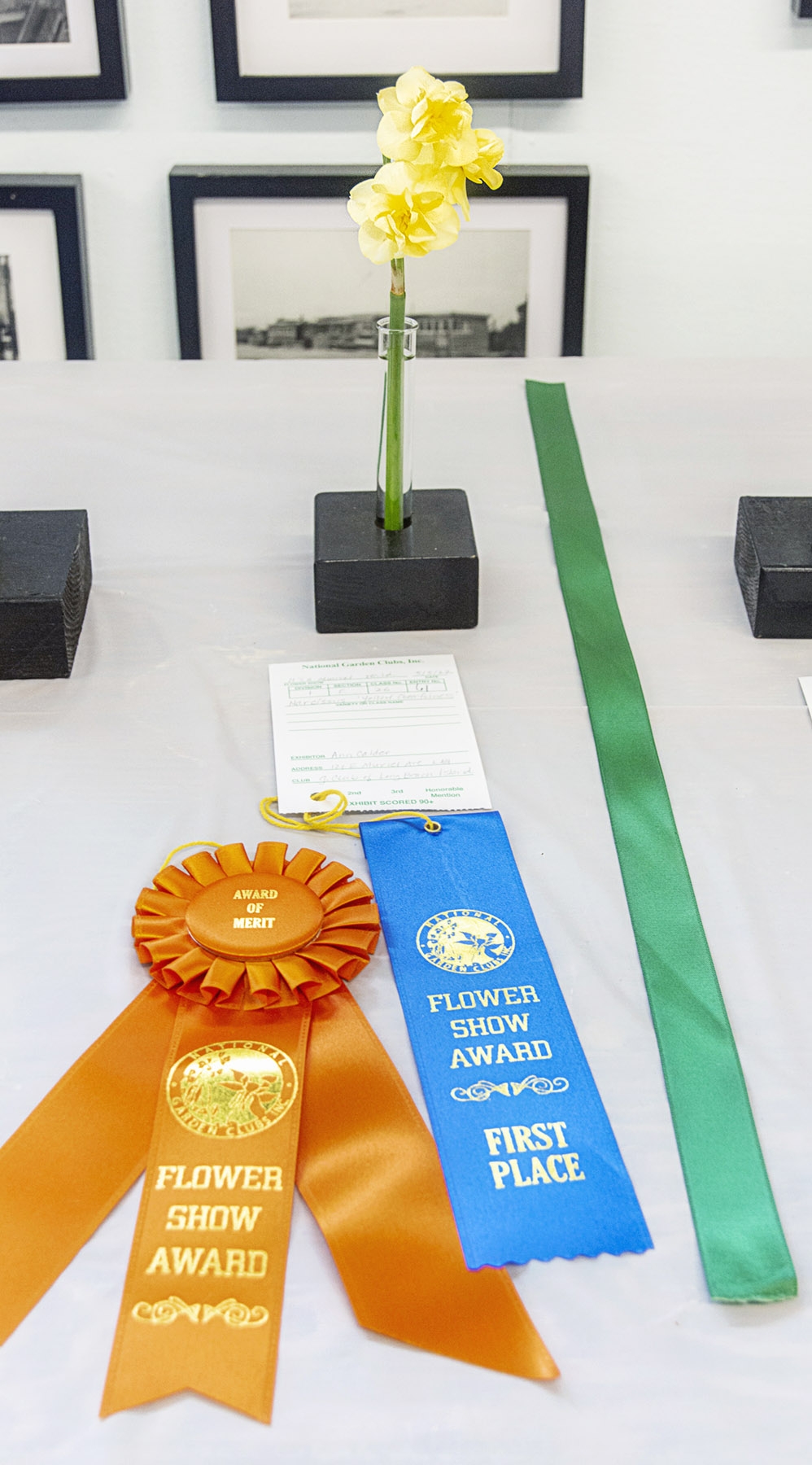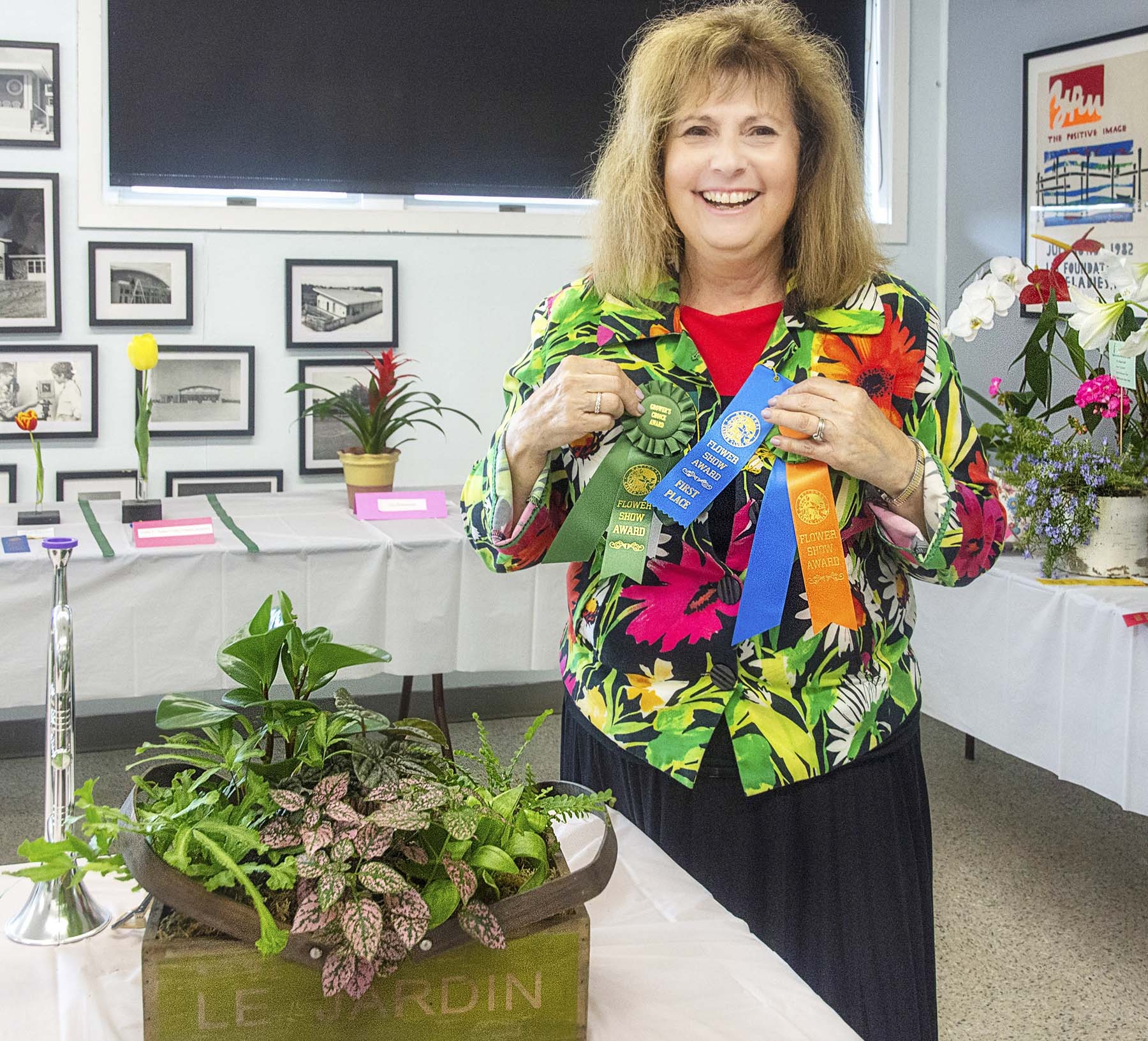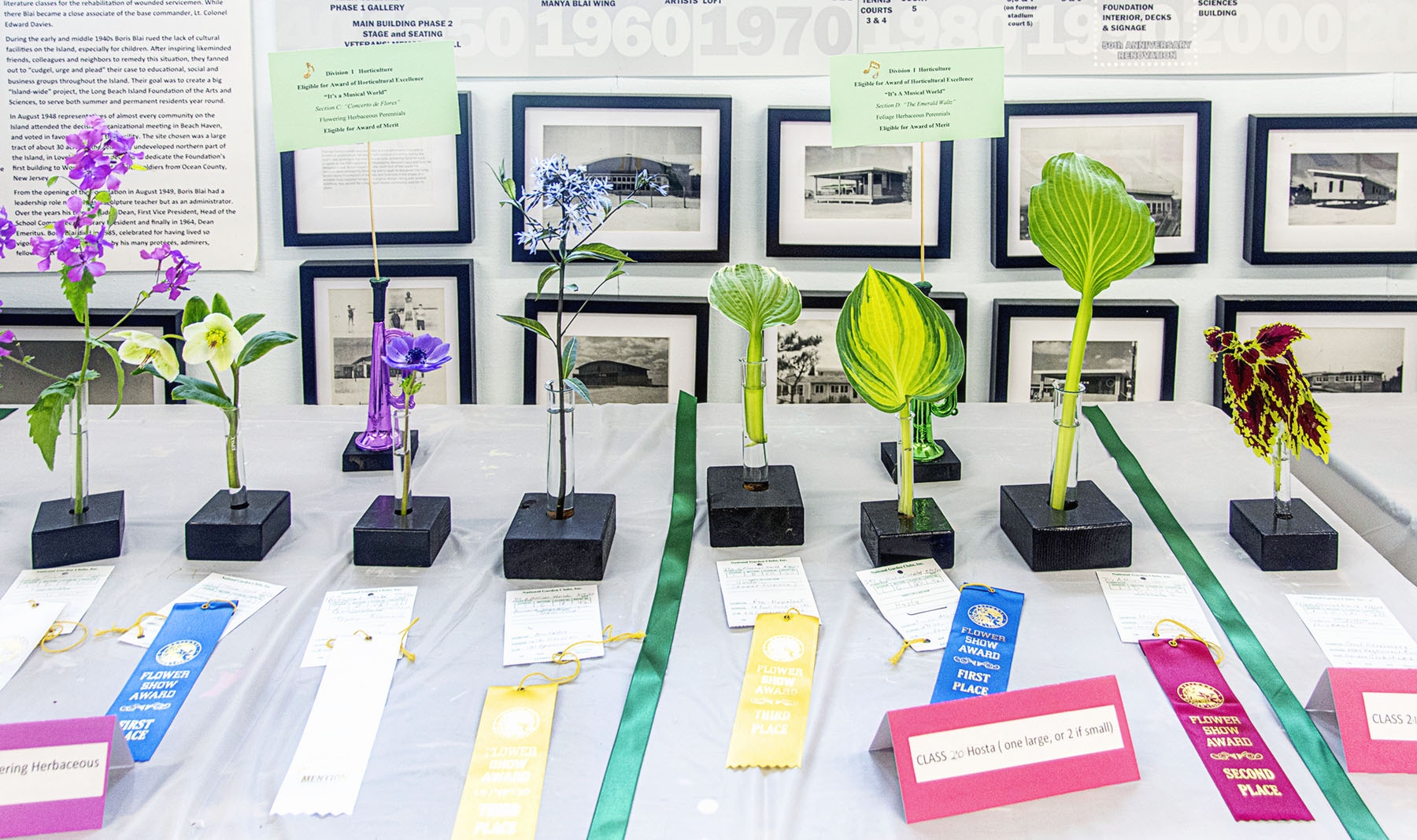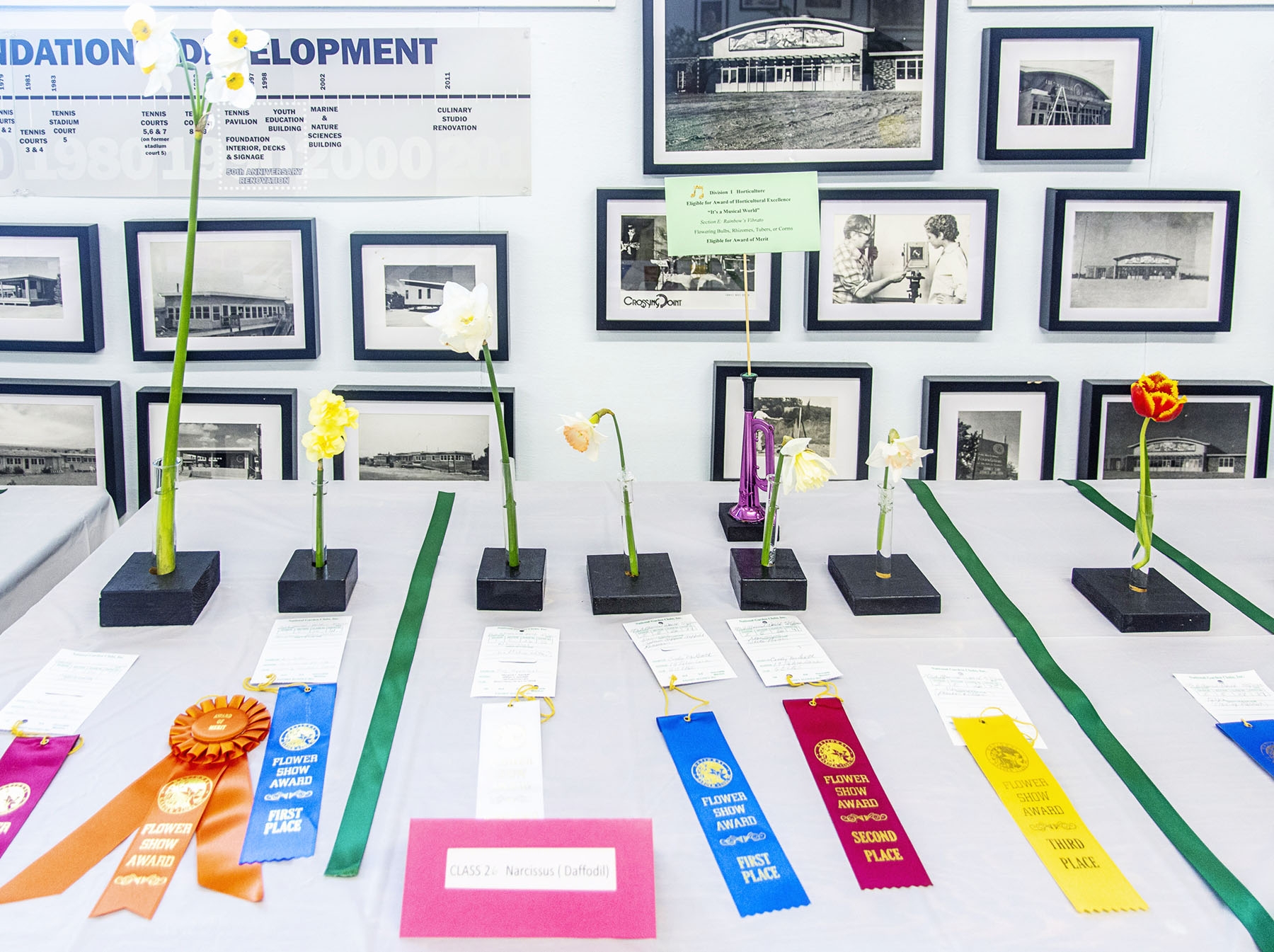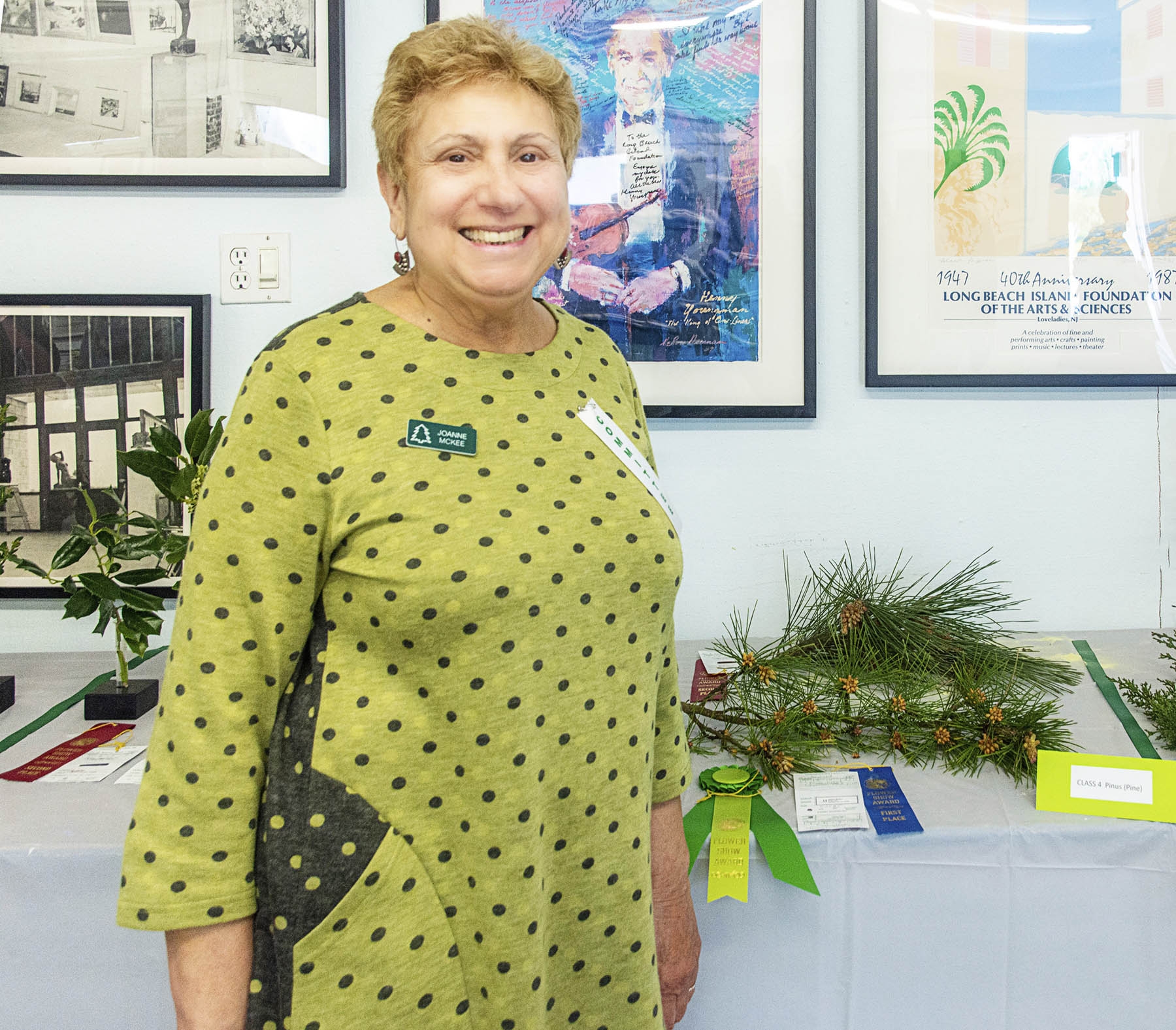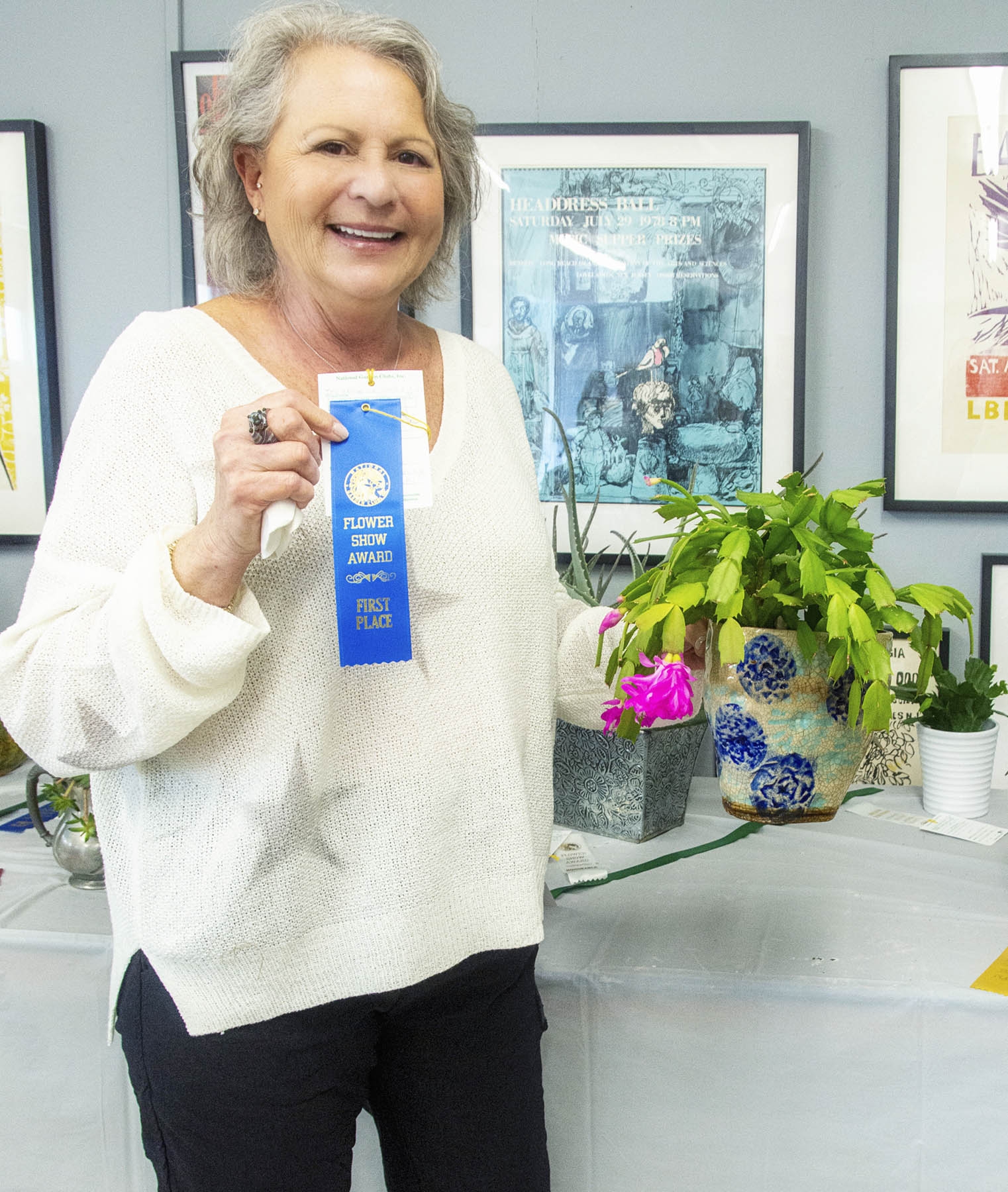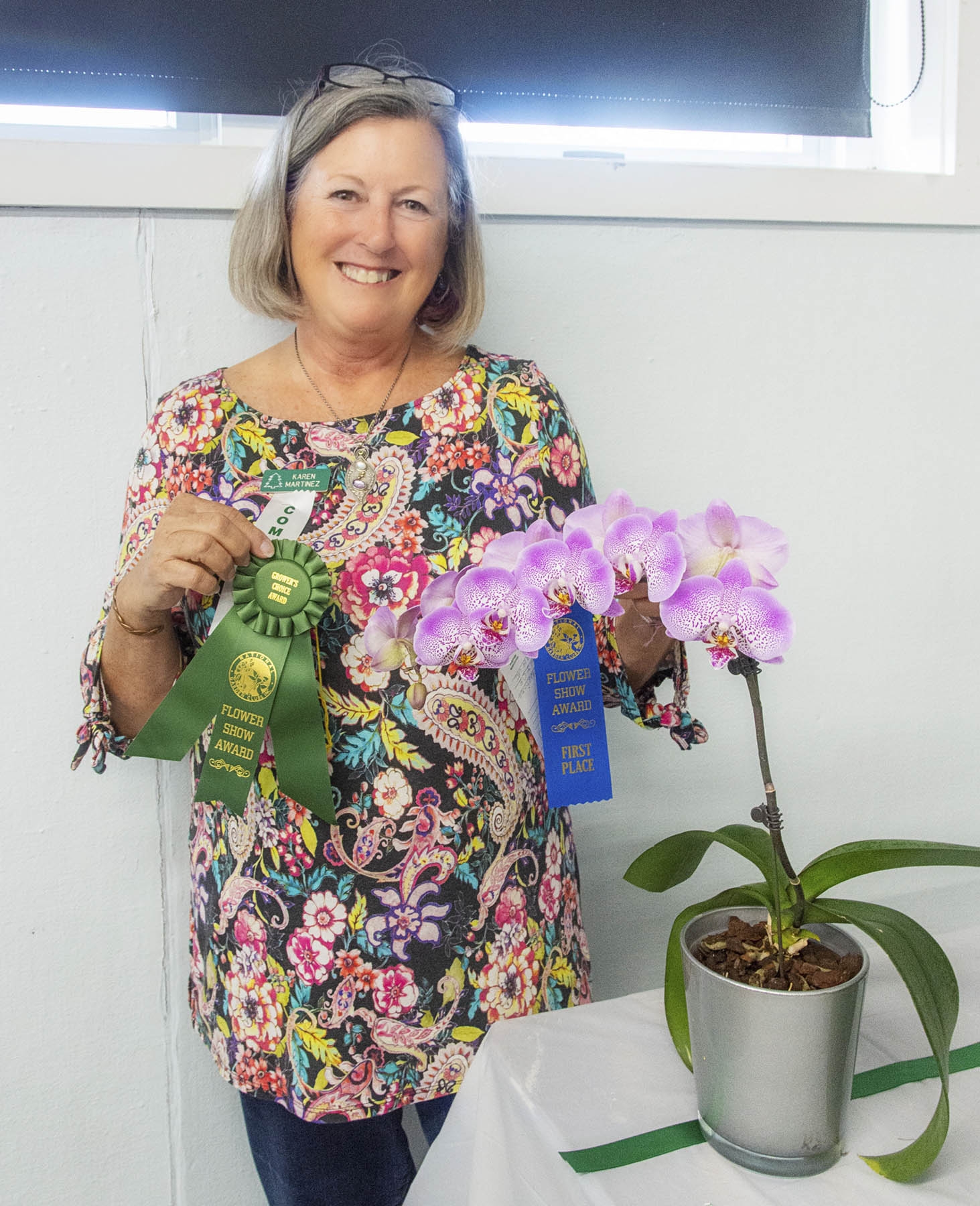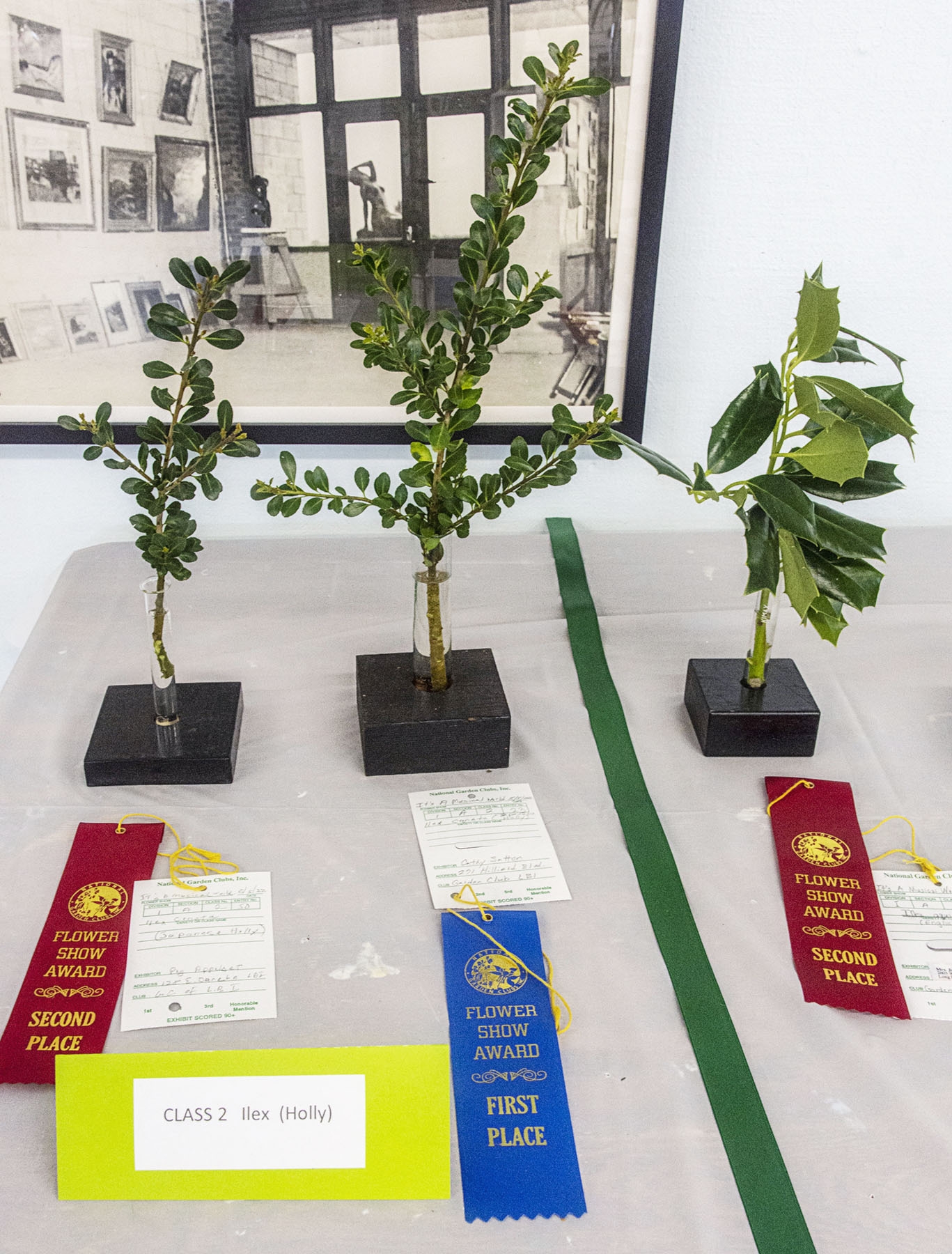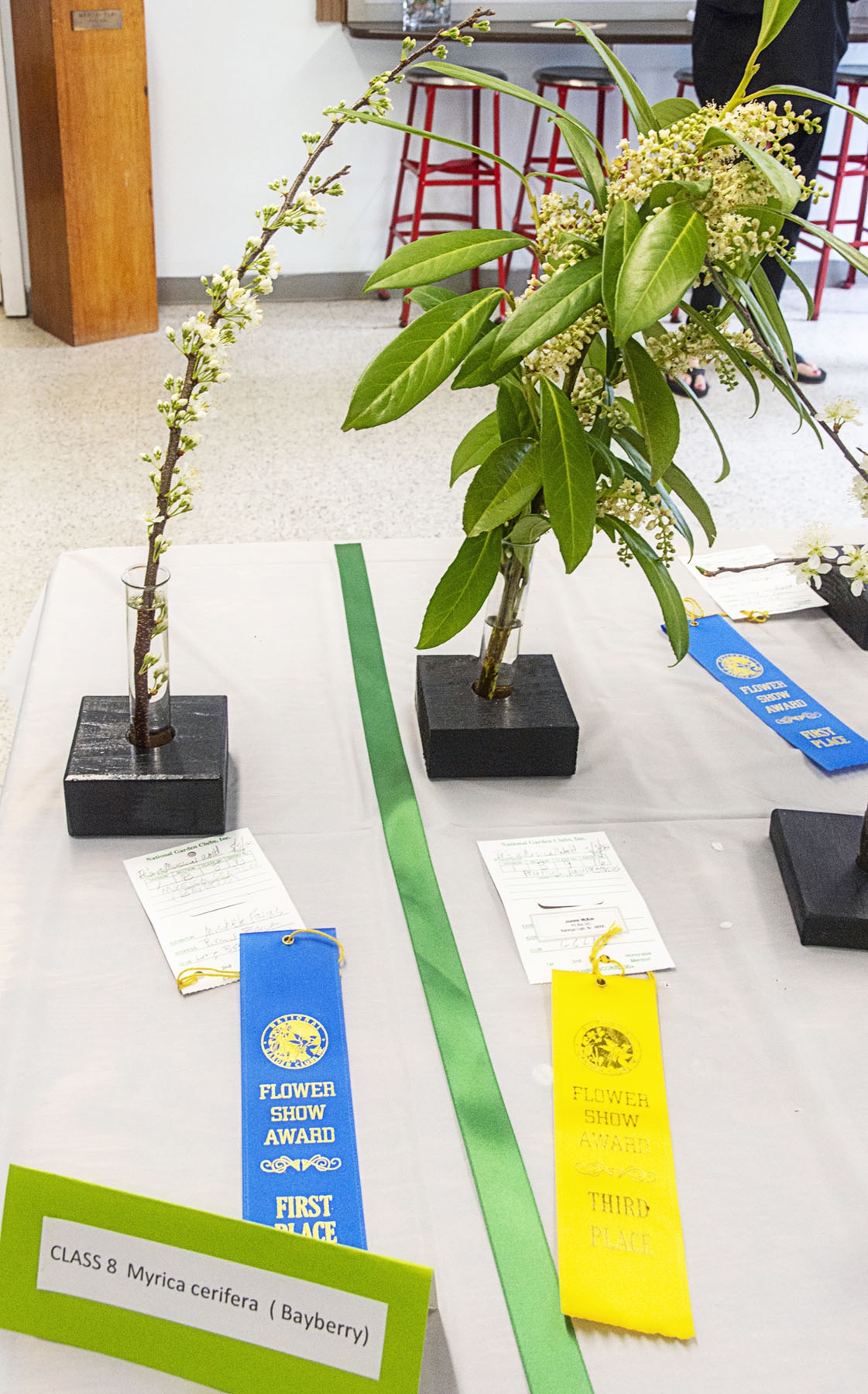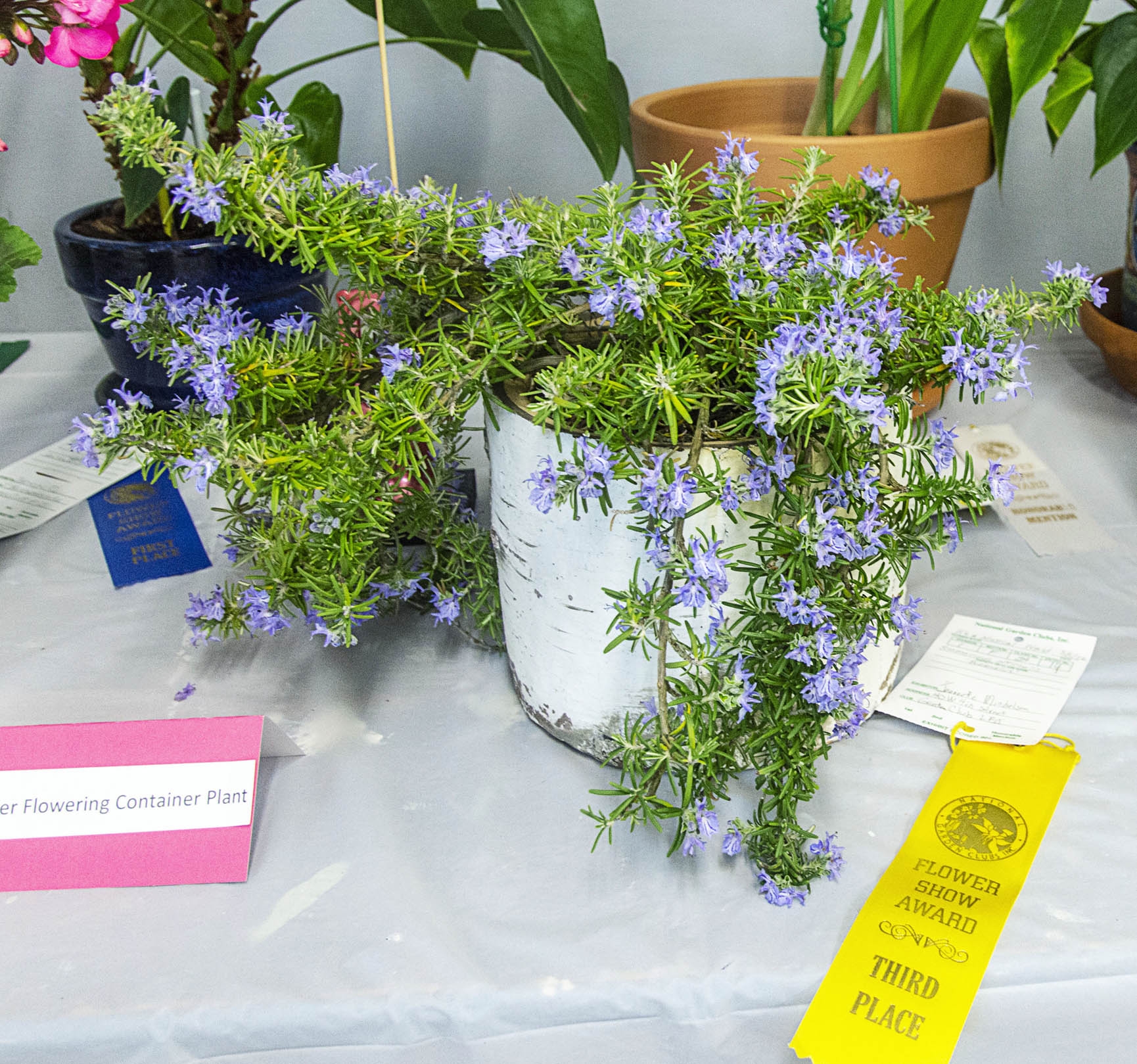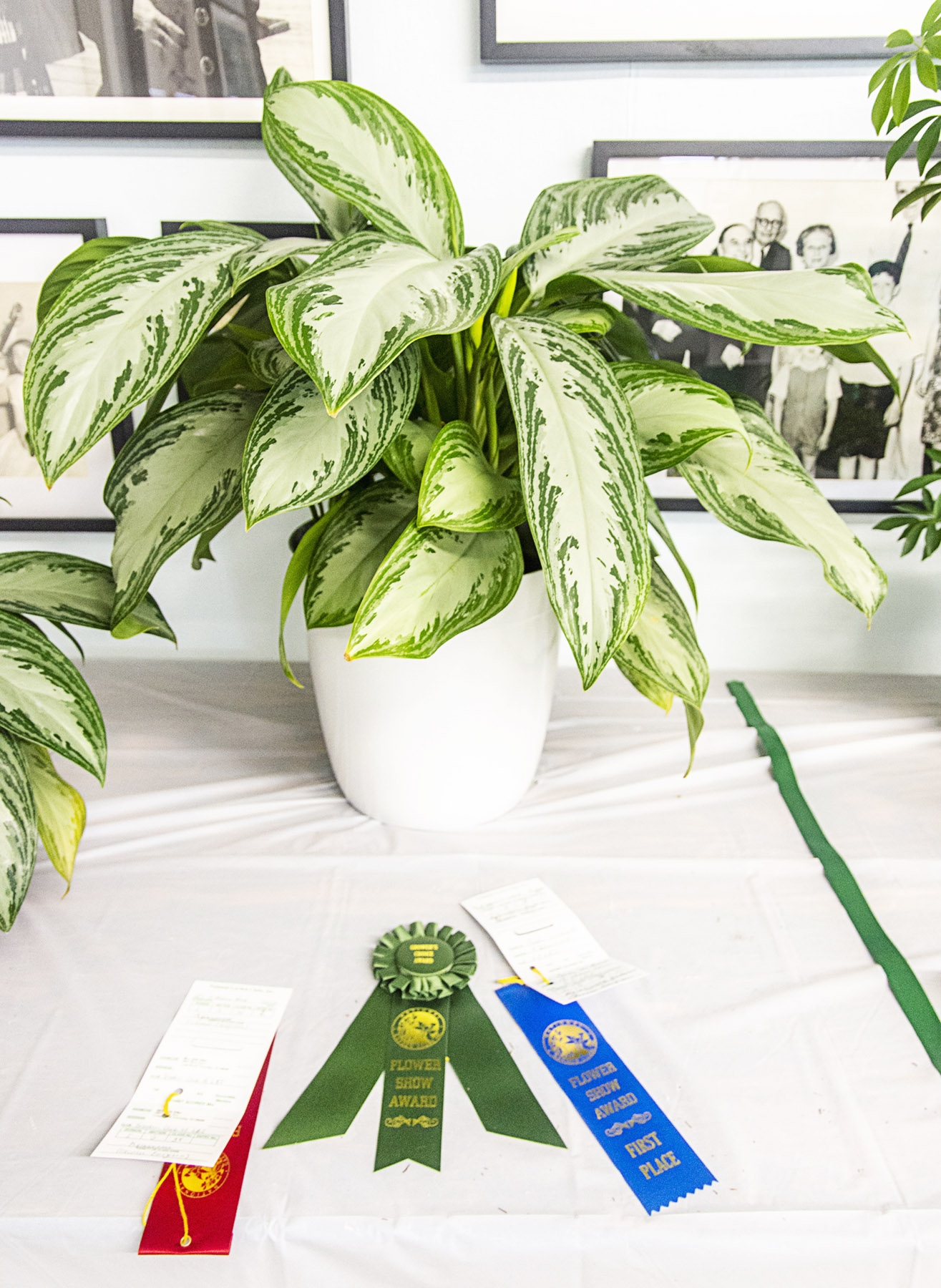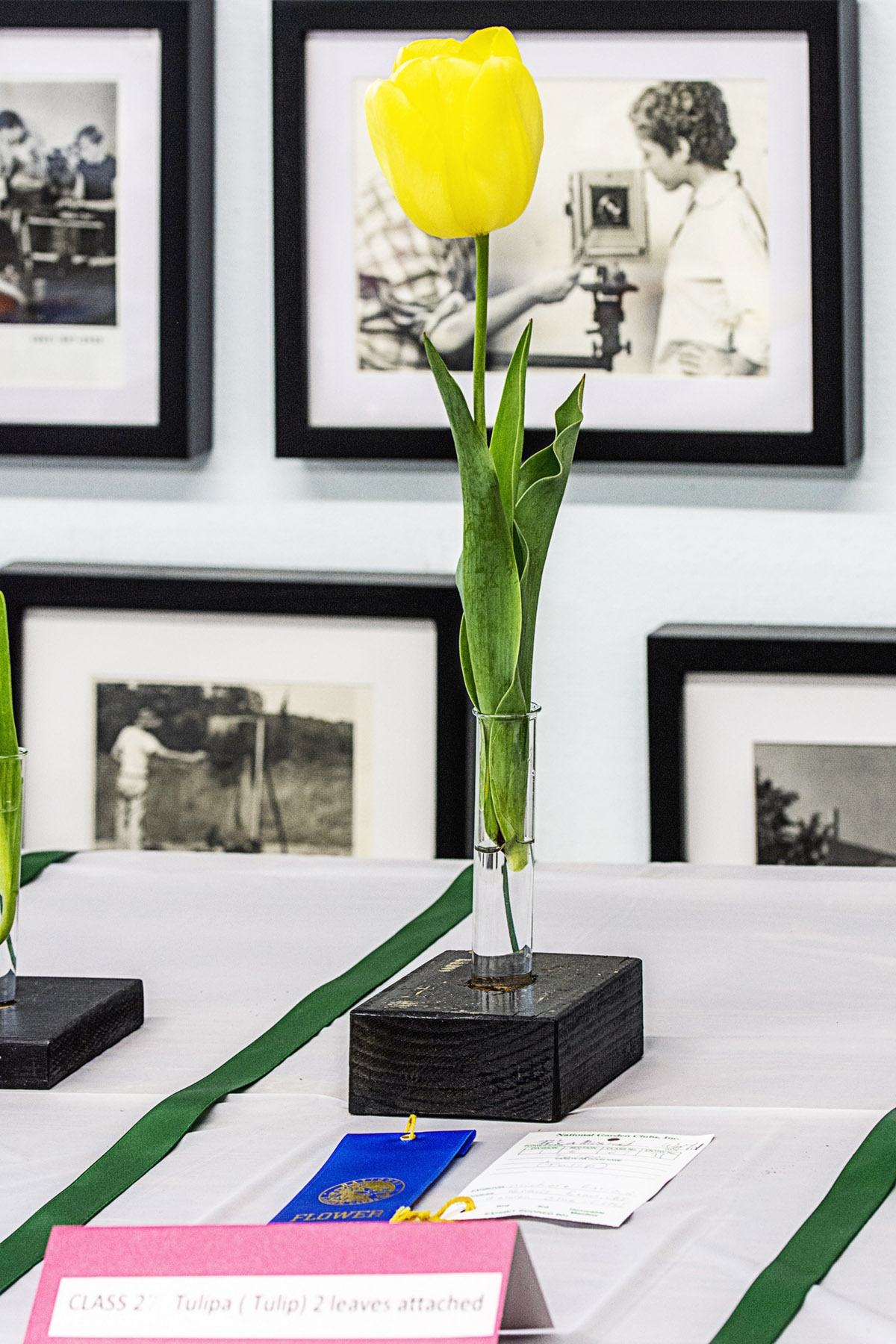Horticulture Chair 2023-2024: Ann Calder, Master Gardener
The Horticulture committee has the primary role of serving as a valuable resource in the field of horticulture to both our club and the Long Beach Island community. The main objectives are to assist the club’s committees and members in making informed decisions and solving problems specifically related to their gardens. This assistance encompasses offering practical advice, providing access to helpful resources, and facilitating hands-on demonstrations. By offering continuous support and guidance, we aspire to create a more positive gardening environment. We firmly believe that this positivity will effectively contribute to fostering an atmosphere of knowledge expansion, increased creativity, and an enduring love for gardening among our club members and the community.
Winter Gardening January 2024
Photos by Jeannette Michelson (click on images to enlarge)
Find enjoyment and be productive in the winter garden season. According to the author of The Country Garden, Josephine Nuese: “Anyone who thinks that gardening begins in the spring and ends in the fall is missing the best part of the whole year. For gardening begins in January, begins with the dream.”
For gardening begins in January with the dream. So let’s start dreaming:
Walk your garden now and check for heaving plants, pests and pruning.
* Plants are affected by freezing and thawing. Replace any plants that have heaved from the ground because of winter weather changes.
* Potential pest problems can be easily spotted in the winter like egg masses and damaged leaves and branches. Take the time now to identify pests and take action.
*Always prune branches and stems that are dead, diseased or damaged. Keep your clippers clean and sharp. Buy new ones if yours are old and cranky!
*Stay on top of weeds and keep walkways clear of mulch and leaves that have been moved after these winter rains and wind.
*Enjoy your evergreens, grasses and the colorful red dogwood stems of Cornus sericea. Perennials like Hellebores actually bloom in the winter. Add them to a walkway or to your home’s entrance so that you can see their colorful blooms and foliage. Consider adding winter interest to your garden if it is lacking.
*Consider adding more native plants to your garden, as well. Or, both! Native plants work in all garden designs, are low maintenance and support and attract wildlife. In the winter. seed pods from Echinacea, white exfoliating bark from the River Birch, bronze stems on Little Blue stem grass are all beautiful. American Holly and Red chokeberry have bright red fruits. All native and all with amazing winter interest.
*Learn and experiment. Reach out to experts like the Garden Club of LBI and Master Gardener organizations with questions. The Garden Club often shares photos and ideas on their Facebook page. Ocean County Master Gardeners offer Helpline Advice by calling 732-349-1245. Read great garden books, attend seminars and enjoy a webinar from the comfort of your own couch.
*Experiment with seed starting or just review the beautiful seed catalogs coming to your mailbox. They are great sources of information. An easy and affordable method of starting seeds is winter sowing. A plastic gallon milk jug acts as a mini greenhouse. The jugs are kept outside and need little babysitting like indoor seeds. Check online for videos and information.Laura LeBoutillier from “Garden Answer” has created some great videos onYouTube.
*Continue caring for the birds. Set up your feeders near a window so you can enjoy watching them from inside. More than likely you will see some clever squirrels too! The birds will also benefit from berries on native plants and leaf liter which can contain overwintering caterpillars that offer great nutrition.
*Enjoy houseplants. If you are a beginner choose easy care plants. Purchase healthy looking plants with dark green foliage free from pests. Read the label and pick the plant for the location. The right plant for the right place is just as important inside as it is outside.Remember that not all plants will have the same watering requirements. Watch your plants carefully until you know how often to water them. For the more experienced indoor gardeners, try something new like orchids, African violets, forcing bulbs, kokedama, hydroponics and propagation.
FALL TIPS SEPTEMBER 2023
(click on images to enlarge)
FALL HORTICULTURE NEWS
Fall is a wonderful time to be in your garden and the perfect time to plant perennials, trees and shrubs. Company has gone, the weather is beautiful and lots of plants are on sale…what’s stopping you!
Begin by taking an inventory of your garden. Review the successes and the misses of the summer.
*Start this process by knowing what plants you have. Save the tags or use one of the many plant ID apps to help you with the identification process.
*Knowing what you have will also help you moving forward. How and when to prune and fertilize and the basic habits of the plant all depend on what particular variety you have in your garden.
*If a plant is unhappy or underperforming make sure you have it planted in the correct place. The “right plant in the right place” makes all the difference.
*When you know what you have and what works well in your garden, you are better prepared for planning for next season.
If you choose to buy new trees, shrubs and perennials consider the following:
*Look at the ultimate size of the plant. A shrub may look small in their nursery container but if the plant grows to a size larger than you anticipated, that creates more work for you and an unhappy plant.
*Know the plant’s light requirements and know what parts of your garden will suit those requirements. Afternoon sun is hot…so, look for full sun plants. Morning sun is more gentle and can support part sun plants.
*Sale plants are plentiful in the fall but many have been in their containers for a long time. If the plant you purchase is root bound, make sure you loosen the roots before planting. You may even need to cut the roots if they are really dense.
*Consider buying Natives. Native plants are more adaptive to our soil and climate. In the long run natives will require less water and should require no fertilizer or pesticides… a win for your garden’s health and our Island’s health. Aster and Solidago are great native perennials to add to your fall garden and the butterflies love them.
Fall Garden Maintenance:
*If you have a lawn, September is a great time for lawn renovation and re-seeding.
*Continue watering your garden, especially any of your new plantings. Water at the roots and water deeply.
*Clean up plants that are diseased, insect infested or in poor condition.
*Pull weeds now. This should help them from germinating and making a weedy mess in your spring garden.
*Resist the urge to over clean your yard. Leave healthy plants and grasses. The hollow stems can over winter beneficial insects and native bees. And, birds love the seed heads of Black-eyed Susans and Coneflowers.
Fall is also a great time to:
*To set up bird feeders.
*Clean your garden tools
*Bring in any houseplants that you have had outside for the summer.
*Try bringing your geraniums and begonias into the house. They overwinter and will lengthen your garden season by adding color inside the house.
*Vegetable gardeners can plant cool season crops like lettuce, kale and spinach.
*Plant daffodil and tulip bulbs for spring color. Plant the bulbs in clumps rather that straight lines to look more natural.
Native Plant Educational Session August 2023
Photos by Debra Resch (click on images to enlarge)
The Garden Club of Long Beach Island participated in the Native Plant Educational Session at the Long Beach Township Field Station located in Holgate on Thursday, August 24, 2023. The event was organized and led by volunteer Juliana Perello, Alliance for a Living Ocean (ALO).
Plants serve as a source of food and shelter for animals. They convert sunlight into energy which is used to feed every organism on Earth – either by directly eating a plant or eating another animal that feeds on plants.
Green Space vs Gray Space
Green space is an area covered in plants while gray space is paved space like roads, sidewalks and parking lots. Plants keep an area cooler by reflecting sunlight. When it rains water cannot be absorbed by pavement and causes flooding, while plants have the ability to absorb and use the water, redirecting it into the ground.
Native plants have coevolved with native animals. This means that native animals may not be able to eat and use non-native plants due to their specialized adaptations. By planting more native plants you can help grow native animal population and promote biodiversity.
Coastal native plants are of special importance. They not only are needed to feed and shelter animals, but they aid humans as well. They hold onto soil or sand and protect against storm surges. Areas with marshes, dunes, and mangroves fare better during hurricanes than areas without due to their ability to redirect the energy from waves, wind and water.
Ann Calder, Horticulture Chair, Garden Club of LBI, was also present who collaborated with ALO by providing various seeds to give away along with native plant information. She presented herself as a LBI gardener who helped answer questions regarding gardening challenges here and how natives could enhance your garden and bring nature into your garden.
SUMMER TIPS JULY 2023
Photos by Jeannette Michelson (click on images to enlarge.)
WATER
Watering plants in hot weather is crucial. Follow these tips from our Horticulture chair Ann Calder to help your plants thrive in the heat.
Watch the temperatures and the rain fall. Extended periods of high temperatures can lead to stressed plants. Wilting leaves (especially on Hydrangea), dry edges, unhealthy vegetable leaves and fruits are all signs of lack of moisture. Water deeply and preferably in the morning. Watering in the morning reduces evaporation and plant diseases. Always water the root zone. Roots are designed to take up water. Young plants and new plantings need more water than established plantings.
Containers need to be watered often. Use your index finger to see the moisture level in the soil. Make sure that the water is reaching past the mulch and the first few inches of soil.
If your soil is sandy, it dries out more quickly than other soils.
DON’T TRANSPLANT
Wait until the cooler temperatures arrive.
DON’ T PRUNE
Pruning should not be done when shrubs or trees are not stressed from heat and lack of moisture.
WAIT ON FERTILIZING
Here is some good information about fertilizing in the summer…
https://extension.umn.edu/news/fertilizing-your-plants-hot-weather
KEEP MAINTENANCE PRACTICES
Weed and deadhead. Weeds compete for water and if you keep on top of them it is not such an overwhelming job. Deadheading will encourage your perennials to put out more blooms.
Take notice of what does well in your garden. If plant material has been struggling or not meeting your expectation, replace it with the plants that do well and give you the most enjoyment. As always, consider natives and nectar sources for the pollinators.
BACKYARD HANDS ON SPRING GARDEN DEMONSTRATION MAY 2023
Photo by Susan Douthitt (click on images to enlarge)
One of the best parts of being part of the Garden Club of LBI is sharing ideas with other gardeners. This spring we offered two hands-on demonstrations to discuss spring garden tasks. Yes, we talked about pruning and fertilizing and bunnies eating our gardens but, we also shared our garden stories and spent time outside together in the garden. Great way to kick off the garden season!
HORTICULTURE TIPS MAY 2023
Photos by Ann Calder
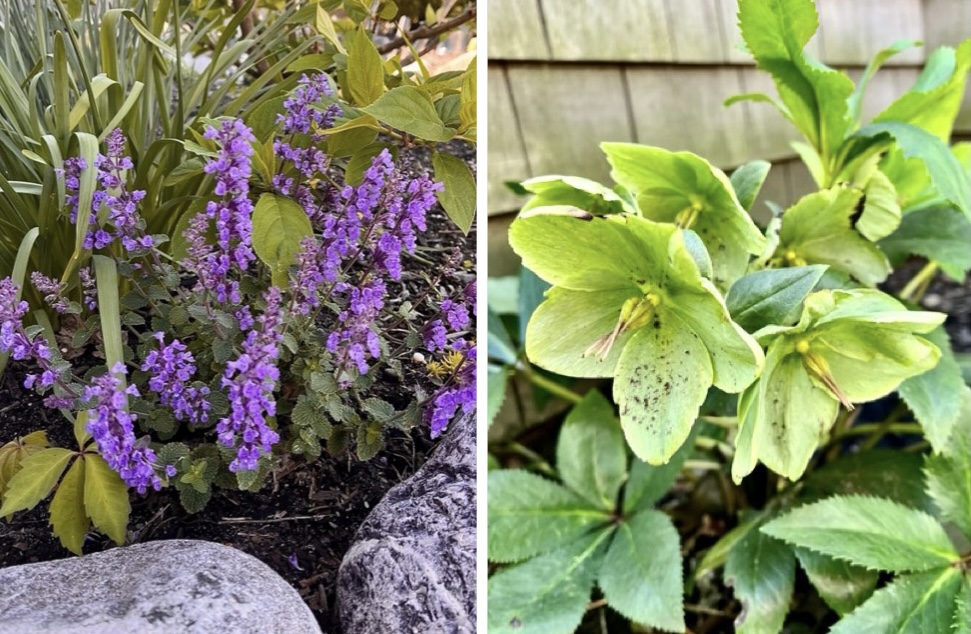
Frost Free Day
As the garden centers begin to put out all their beautiful flowers, it is tempting to get a little ahead of ourselves. Be aware that there are cooler season, or hardy annuals, that can take colder temperatures and that there are tropicals and heat loving annuals and vegetables that will not.
Annuals like pansies and violas, snap dragons, primrose, ranunculus, stock and sweet alyssum are wonderful cool season annuals. They extend the growing season and offer pollinators nectar when few plants are blooming in the garden. They also compliment spring bulbs and add the much needed color to our awakening landscapes and containers. These cooler season annuals will fade when the summer temperatures rise.
When planting summer annuals, tropicals and summer vegetables (like tomatoes), you need to watch the extended forecasts and the frost free date in your planting area. The frost free date will give you a guideline for planting without the threat of frost. There are many resources online that can help with the timeline.The National Gardening Association suggests that zip code 08008 will have a 90% chance to be frost free after April 23rd. But, always be aware of your individual plants’ needs. Tomatoes and most annuals like hot weather. Night time temperatures need to be above 50 degrees. This is why many gardeners in this area use Mothers Day as their ‘safe day’.
Purchasing Plants
*Planting season is a wonderful time of the year. Have fun, experiment. Mix annuals, perennials, herbs to create beautiful combinations in your garden or in your containers.
*At the garden center, inspect plants for healthy growth and insects. And most importantly, read the label. Matching the plant’s growing requirements with your growing conditions. Pick the right plant for the right place.
*Refresh your soil with amendments like compost and raised bed mix. For containers, use a potting mix designed for containers, not garden soil or last year’s potting soil.
Horticulture at the May 2022 Standard Flower Show
Photos: Jeannette Michelson (click on images to enlarge)





